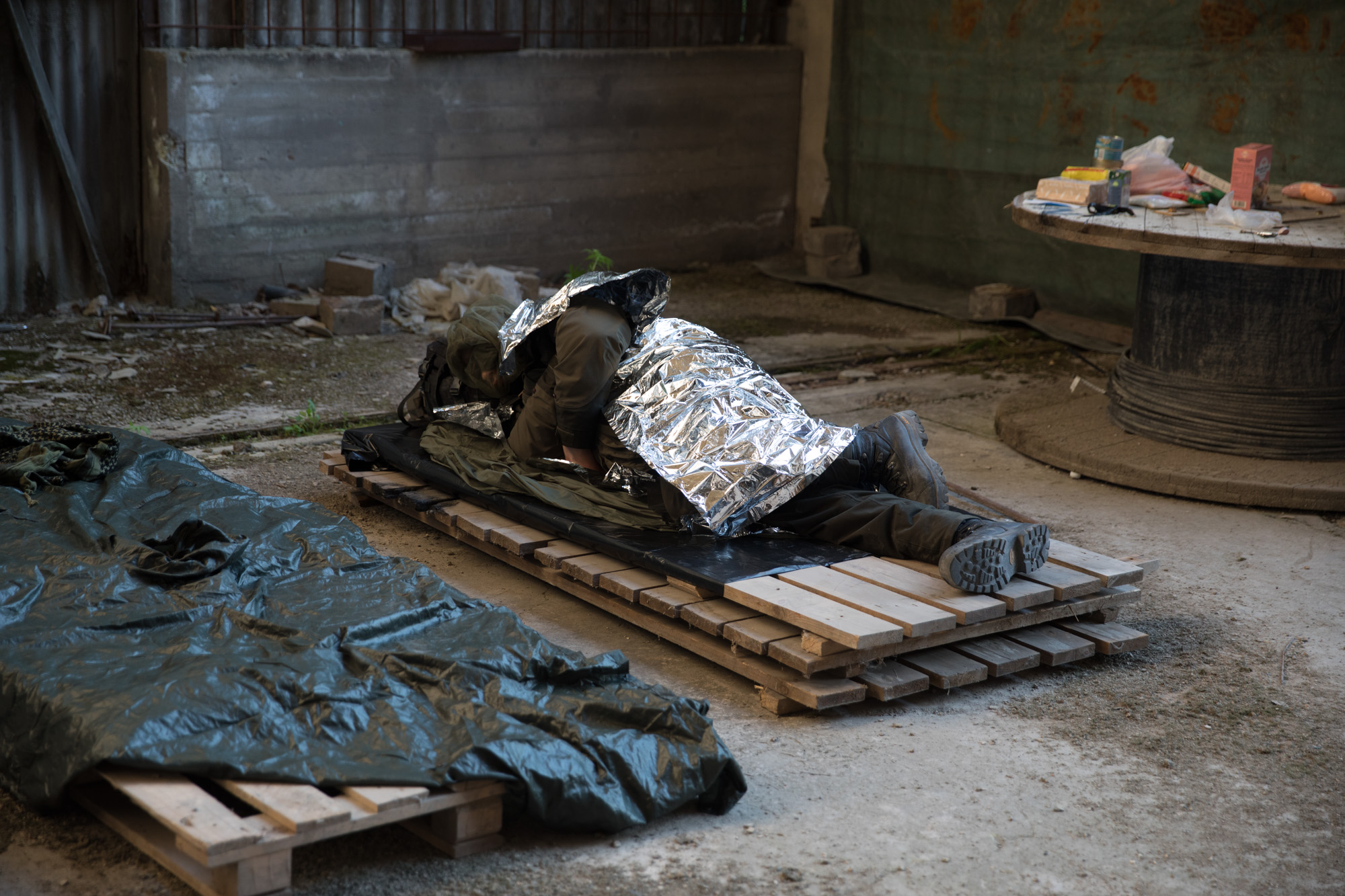
SERE-A Urban Survival Course
SERE-A Urban Survival Course
How would our forest hermit of an employee survive in an urban environment after the Apocalypse? Let’s find out!
When they asked me at work whether I’d like to write a story on an urban survival course, I instantly blurted out “hell yeah”. After a short while, I started wondering what did I get myself into now? I live in the countryside in a sparsely populated area and spend my vacations in the wilderness, so surviving in the bush is a lot more familiar to me. What do you do in the city when you can no longer order pizza, electricity doesn’t come out of the socket, and savage thugs rule the streets? And would this backwoods princess used to sleeping on soft mossy beds survive on cold concrete? And how do you prepare for this kind of stuff?
Survival, Evasion, Resistance and Escape
SERE-A (Survival, Evasion, Resistance and Escape) is a three-part survival course for adults (summer, winter, and urban). In addition to the weekend-long course, it includes some home assignments and reading material. Even though it is originally a military course based on a NATO standard, nowadays it is also available for civilians.
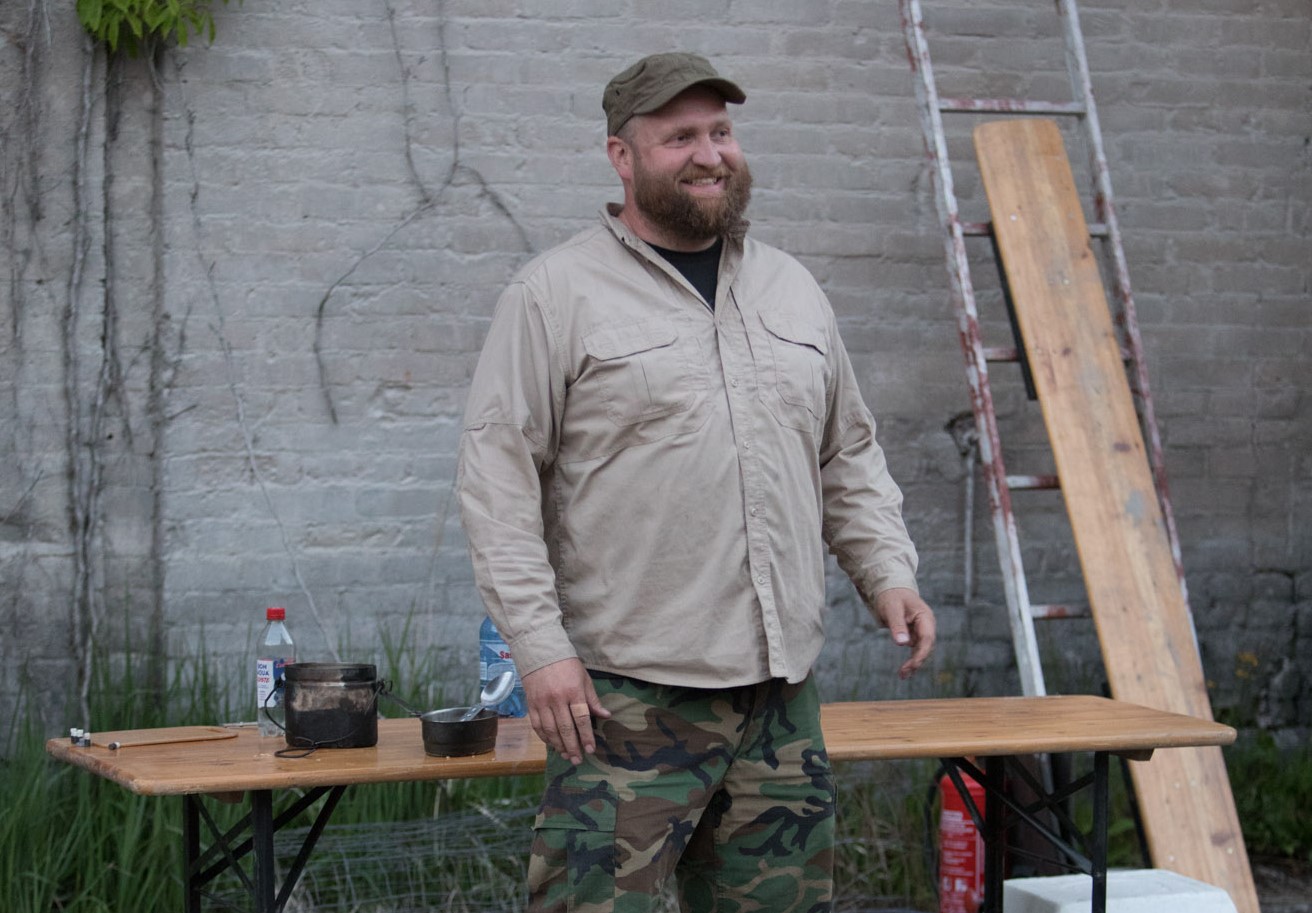
The head instructor was Sampsa Olkinuora from North69Survival.
This particular course was organized by North69Survival. The main instructor Sampsa Olkinuora has been arranging numerous SERE-A and sniper courses. He has a wide ranging expertise in survival, bushcraft, hunting, and fishing. He is a certified SERE-instructor.
Prepping for prepping
The original idea was just to visit the course as a journalist. However, I thought I’d get a better picture by participating in the whole thing. And to be honest, my inner prepper wanted to go through it all.
We got a list of stuff that we could take along, and it wasn’t very long. A field uniform or something similar, sturdy shoes/boots, something warm for breaks, rain poncho, knife, small backpack, and survival kit. Since I hadn’t taken any of the other SERE-A courses and didn't know jack shit about urban survival, I first considered asking for further information. But I ended up keeping my yap shut. After all, you cannot be calling your buddies for advice during the real apocalypse either.
Clothes make the prepper man
As I didn’t know whether we would be battling zombies or local winos and washing in contaminated water or wallowing in our own muck, I prepared for a bit of everything.
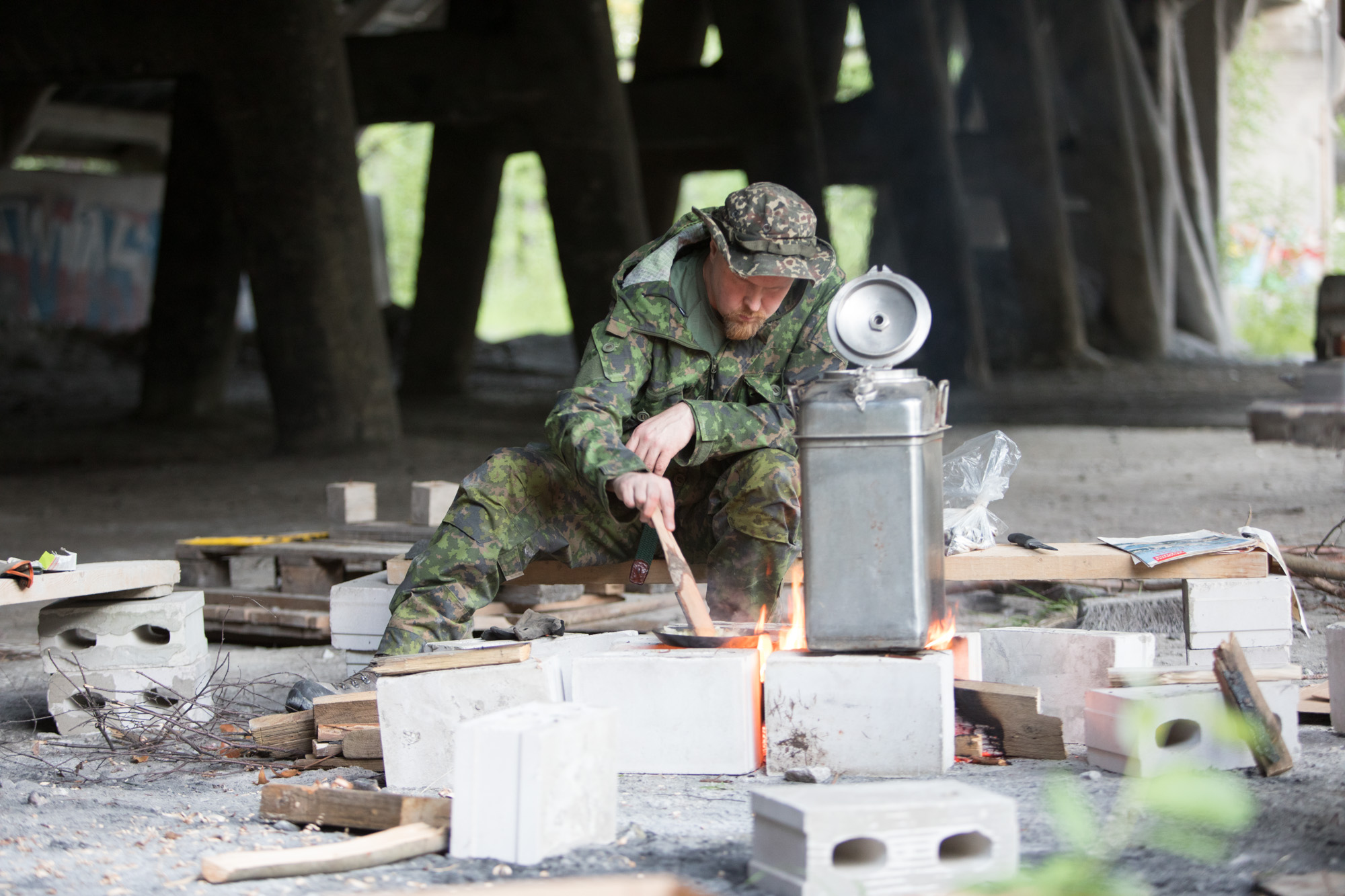
Särmä TST Combat Trousers and Recon Smock, underneath merino wool.
As my base layer, I selected Särmä TST L1 Boxers, Särmä TST L1 T Shirt, and Särmä Merino Socks. When I go camping, I go as a merino ninja because the material feels quite comfortable even when wet and it doesn’t start smelling of cat piss like the technical crap I used to wear. It also breathes, warms you up, and cools you down quite nicely. Two shirts are enough for week-long trips. This time I could only bring one but you won't start to ferment in such a short time.
On top of everything, I put Särmä TST Recon Smock and Särmä TST L4 Combat Trousers. The upcoming weather looked hot and dry, so the combination seemed a tad warm. However, the forecasts are nowadays as reliable as political promises, so I decided to prepare for those “where the hell did this crap come from” moments. My Recon Smock is Long - not because I am that tall but because I want the hem to protect my backside from the weather and potentially hostile bugs. I have also waxed the smock for the possible rain.
I didn't think I'd need the warm mid-layer, but it could at least function as extra padding if nothing else. I took along our Wool Field Shirt It is relatively thick and works in cool weather but doesn't take too much space.
I was quite certain that I would be overheated in the pants in the daytime because they are quite thick. But I thought that the thickness might come in handy during the nights since sleeping bags weren’t allowed. They are also flexible, so ninja moves would also be possible if necessary. (Even the ultimate ninja moves that my old body could no longer handle.) On my head I had my trusty boonie. What can I say, I am not a baseball cap kinda guy. As a carrying device, I took my Särmä Large Assault Pack. It probably isn’t the “small pack” specified in the equipment list but it was the smallest I got. And as a journalist, I had to bring a bit more extra stuff for taking notes and such that I had to take some leeway anyway.
I also took along a BW rain poncho. This rubber monstrosity is fantastic. We have a few of these when we go canoeing for a week or so. You can use it as a raincoat but you can also sit on it, use it as a dining table, rain cover for the backpacks, and spiritual comfort during a nuclear disaster. Weighs a ton and doesn’t breathe at all but is made to last. My knife of choice was Terävä Jääkaripuukko 110.
What the hell is a survival kit?
Additionally, we were allowed to take along the survival kit familiar from the previous courses. Since I hadn’t participated in the previous courses, it wasn’t very familiar to me. Then again, if I took the courses in the correct order, I would also learn the things in the correct order. Lucky for me there were quite clear instructions on how to build yourself such a kit.
You should be able to survive all sorts of situations with the help of your kit. However, you weren’t supposed to drag a coffin-sized container with you. Instead, all the things should fit in a small, preferably metal container that could also be used as a cooking vessel. Such a small box would be easy to keep with you in your car or bug-out bag. There are of course all sorts of containers but I only had one. A mess tin. But not just any mess tin but the Swiss Mess Tin, because you can fit a bit more stuff in it. And like the famous philosopher Yngwie put it so well, “Less is not more, more is more”.
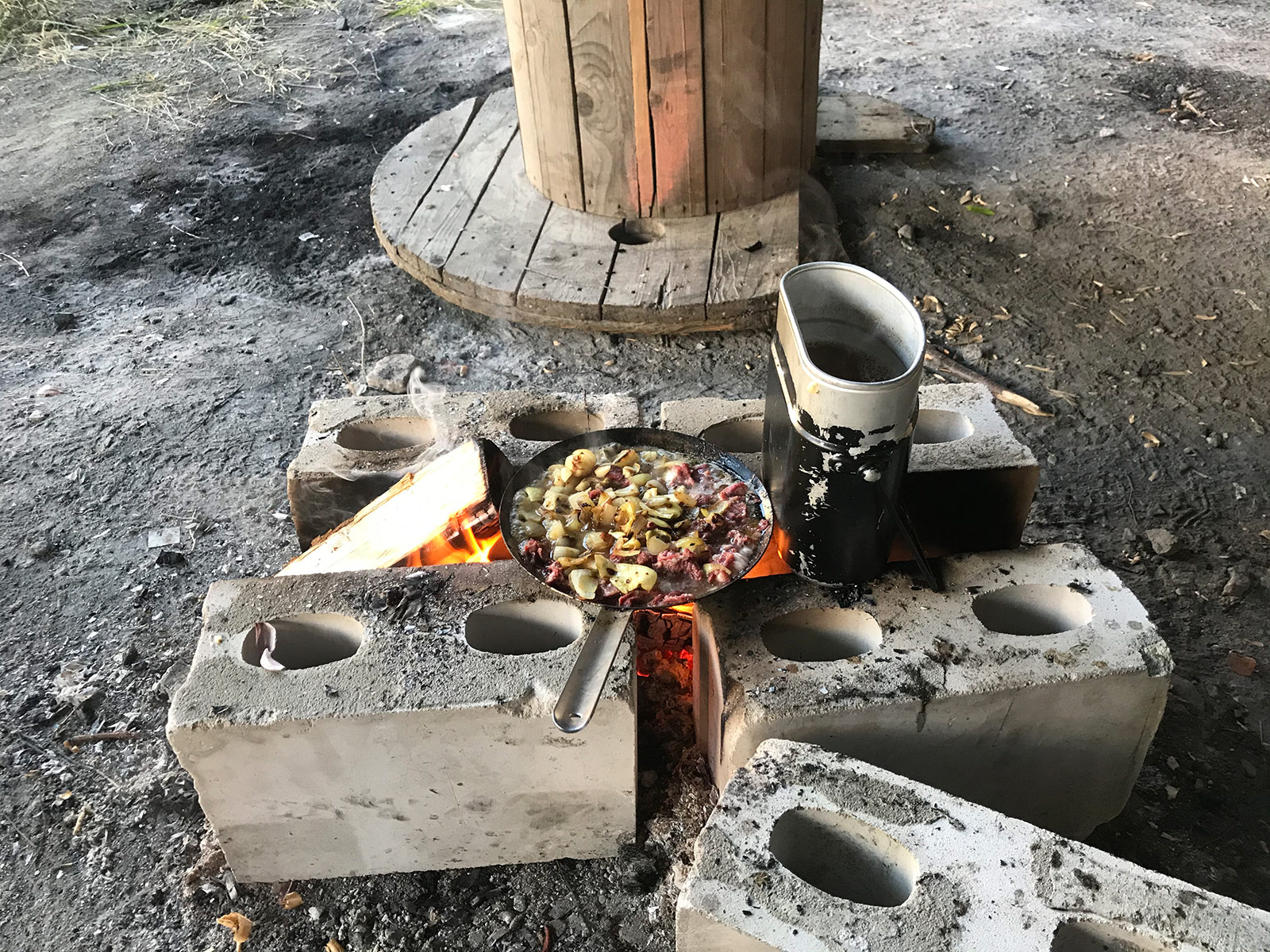
The Swiss mess tin stored my survival kit and worked as a cooking vessel.
I added a little bit of everything in my survival kit: a fishing kit, first aid gear (band-aids, gauze bandage, some medicine, space blanket), an extra knife, a large trash bag, spork, a fire steel, head lamp, storm matches in a waterproof box, and some Scho-ka-kola to give me some energy in case we only had dried grass to eat. No idea whether my choices would be good or completely screwed up but we’d find it out quite soon.
First day
Kalkki-Petteri
Kalkki-Petteri
As I drove towards the given address I was more than skeptical whether the whole country would have a suitable place where civilians could train urban survival. I was quite certain that we would be using some sort of a sandpit and imagine it into a wanna-be urban setting. However, when I got there, I realized how wrong I had been.
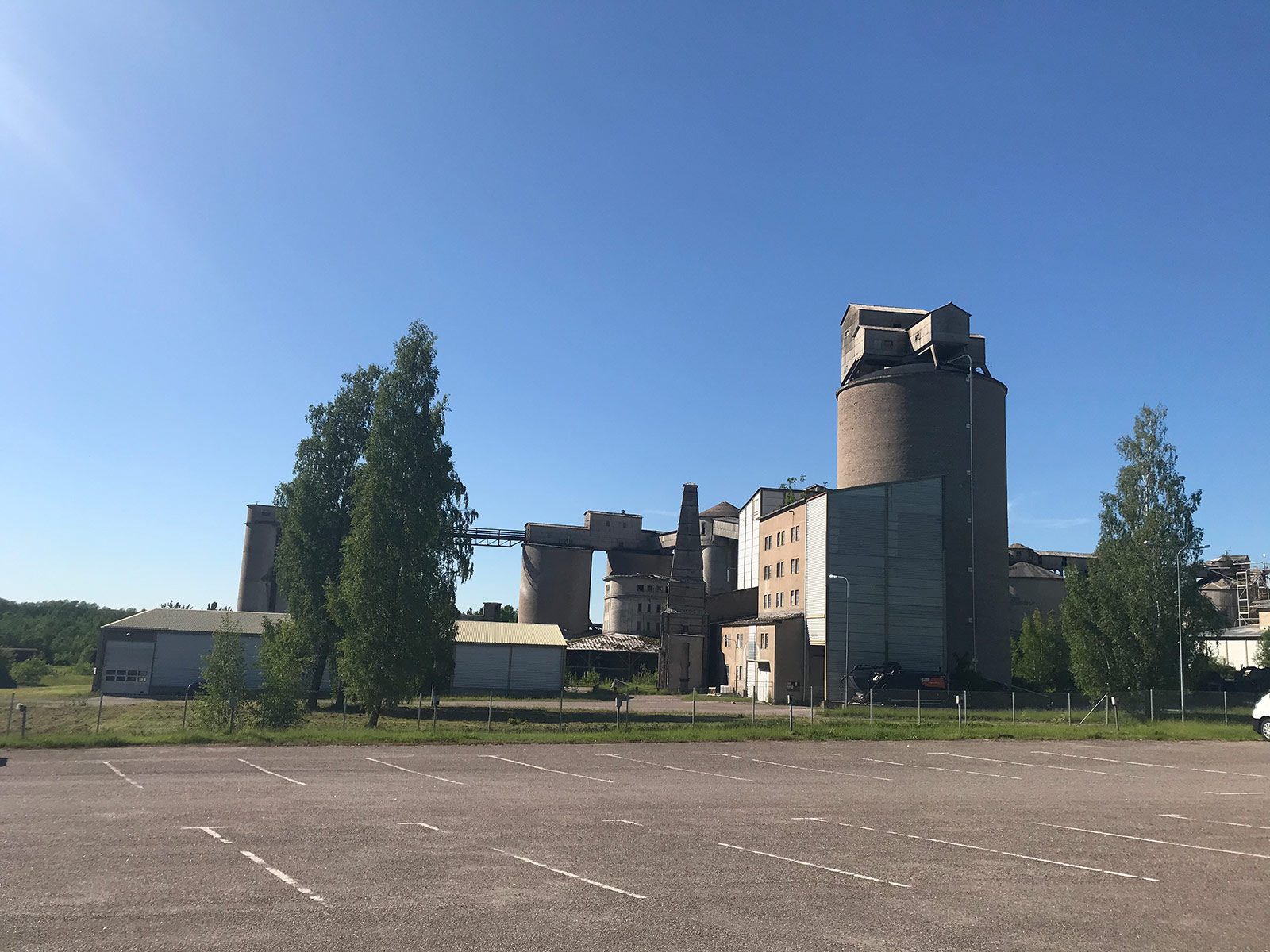
The course took place in Lohja, in southern Finland at a huge, abandoned chalk factory that is nowadays used, for example, by the Finnish army for urban warfare training. And it is absolutely perfect for this kind of course. Loads of dilapidated factory buildings, tall creepy towers, and all sorts of lovely junk, dust, and muck. It simply oozes urban despair. All that was lacking was a raspy voice on a megaphone declaring “Just walk away and there will be an end to the horror”.
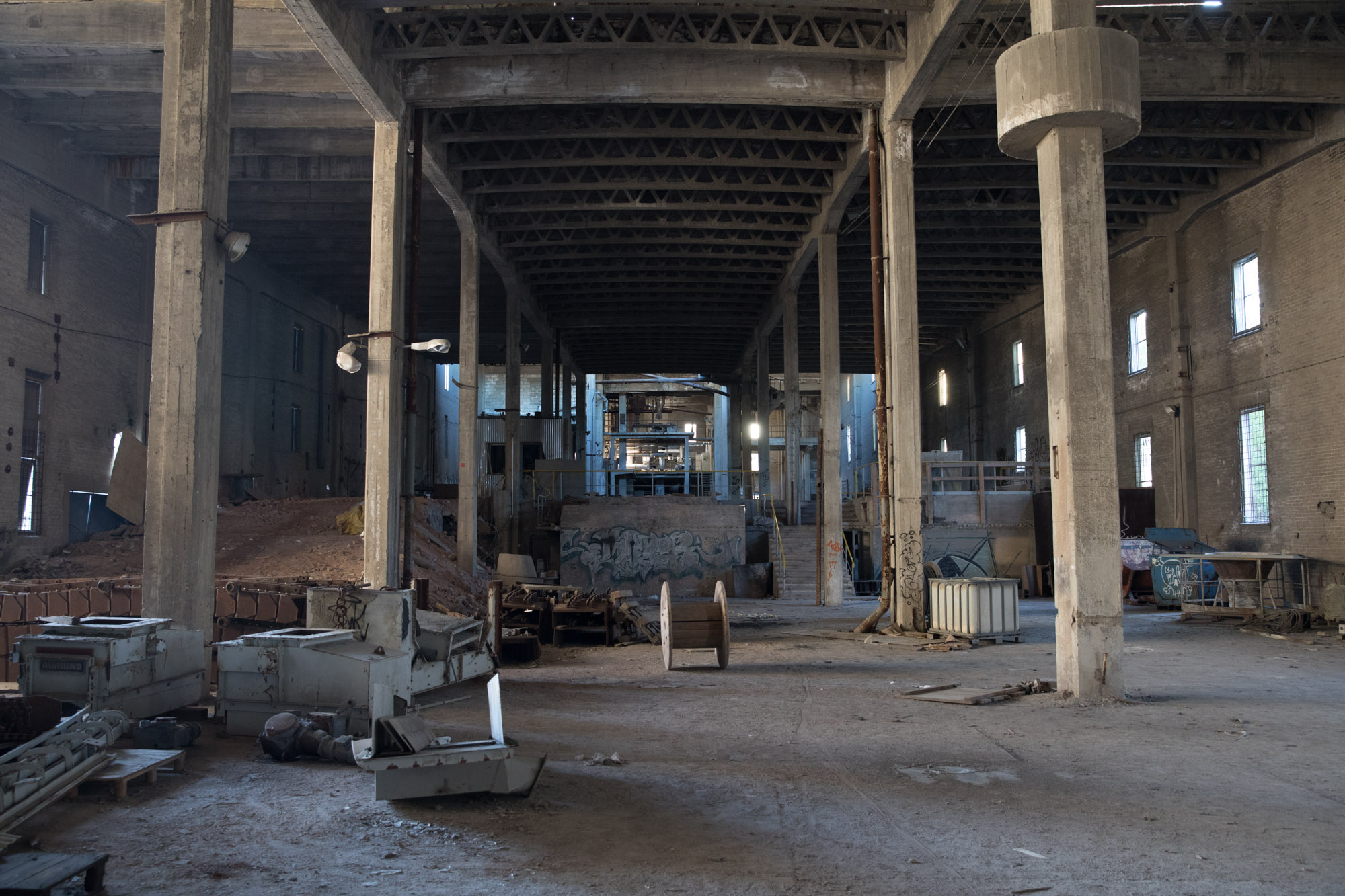
Tons of lovely junk everywhere around us.
Meetings and beginnings
We started by getting to know each other. In addition to myself, there were seven other people on the course, two of which had already taken both the summer and winter course, four the summer course, and one was a first-timer. Additionally, Samu from our place came along as a photographer. However, he stressed that he was ONLY a photographer. So, he wouldn’t have to sacrifice any comforts, that bastard. You will hear a bit more about this later on.
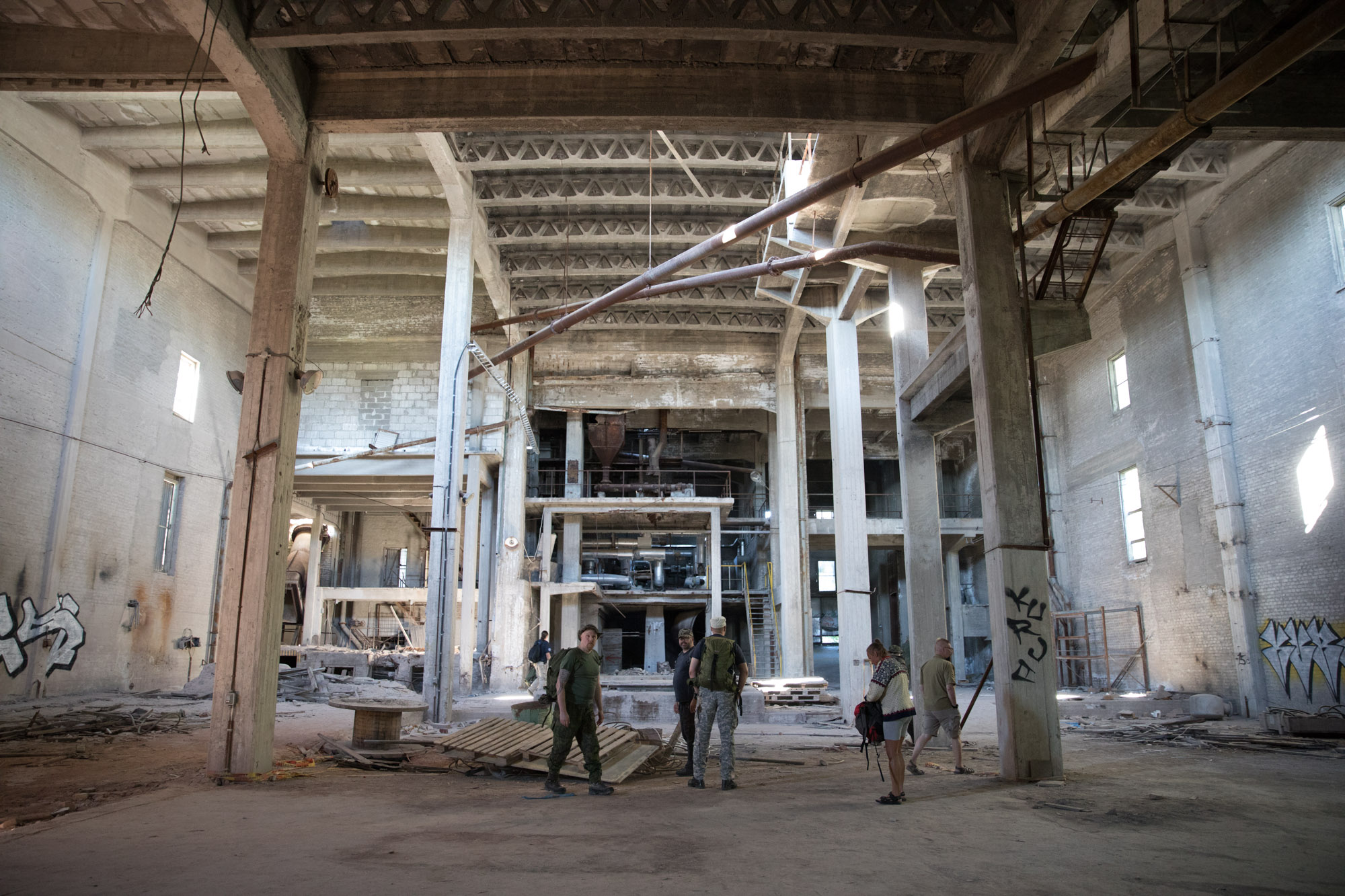
The idea was to simulate the situation where the society has for one reason or another collapsed and people have left their homes with very little stuff. First, we went through everybody’s survival kits. Everyone had fairly similar stuff with a few exceptions. Then we took a small tour in the area and talked about what you should take into account when building your camp. We also split into two equally-sized groups. The first tasks of both groups were to find a suitable campsite, build the camp, and construct a toilet. We were allowed to utilize the loose junk lying here and there relatively freely.
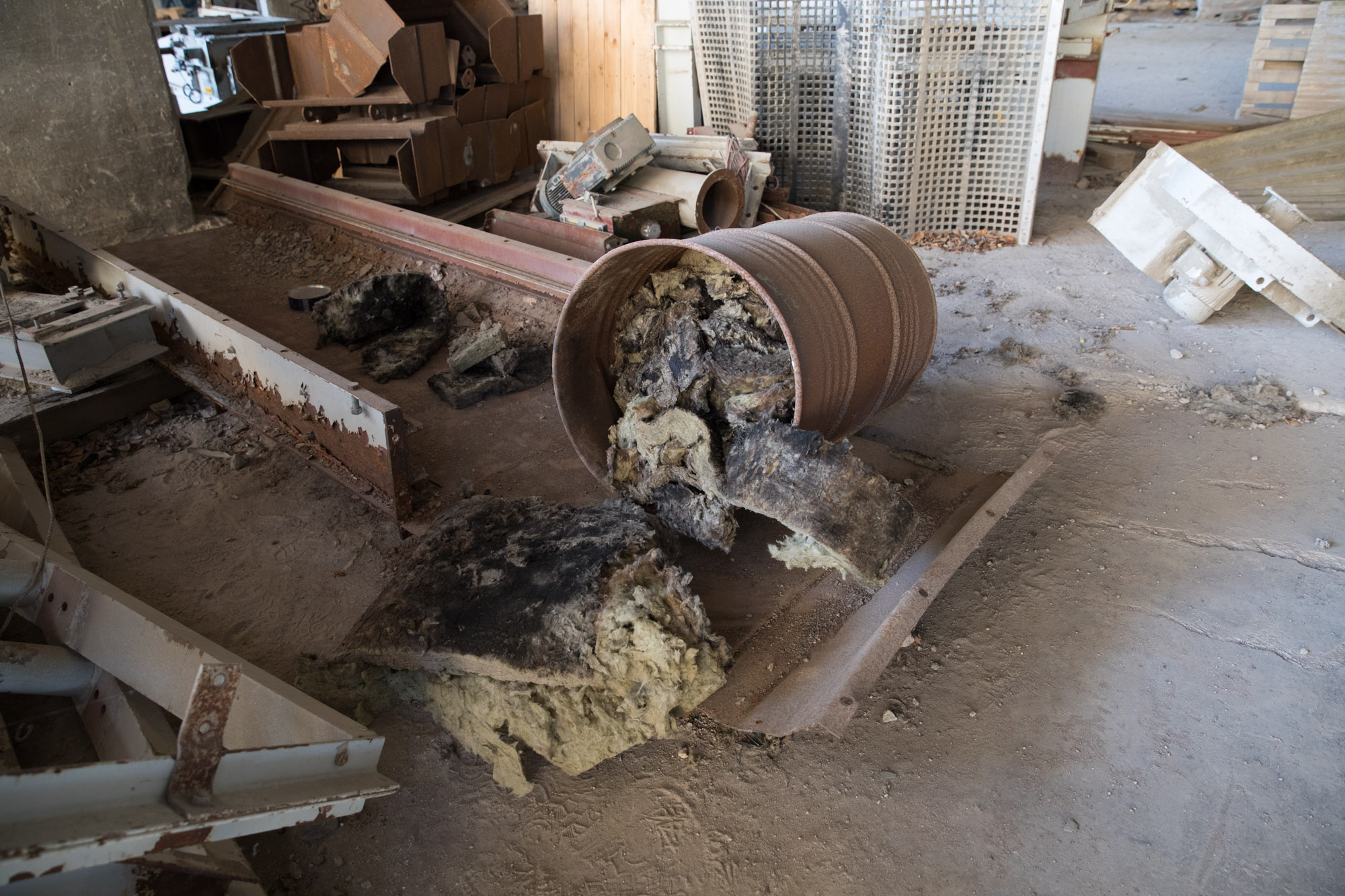
Some mattress stuffing that I didn't want to use.
At this point, there was the second surprise, food. I had mentally prepared myself to gnaw on mummified rats and drink radioactive sludge. However, there was a lake just a fifteen-minute walk away, and they had reserved us a mixed assortment of foodstuff. Now that the system had for one reason or another gone kaboom, people had quickly grabbed perishable and less perishable food from their homes and bugged out. To simulate this, each group could select five products from the pile and the rest were distributed fairly equally between both. We also got a tiny frying pan and a large metal water container so the near future started looking quite bright.
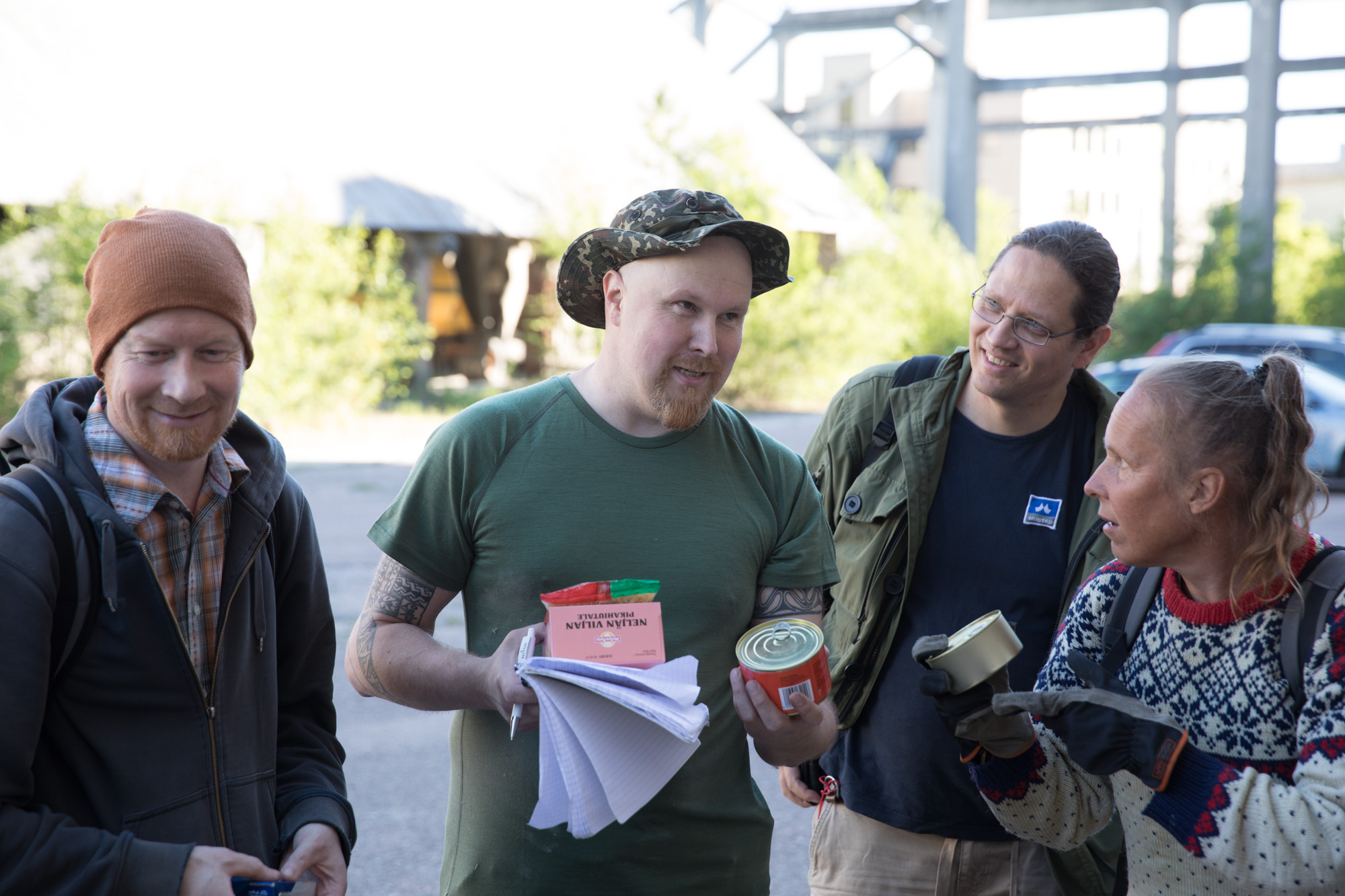
The group Kerkkä investigating the supplies they had scraped together. Toni, me, Mika, and Johanna.
The next task was to scout out a suitable campsite. The “main building” was full of chalk dust and who knows what toxic fumes, so our group said screw it and decided to set our camp in a fairly open ruin of a building where the air was hopefully less hostile. We scattered our beds quite far from each other in the spirit of pandemic.
Samu, who was “just a photographer”, started building a five-star lounge out of his hammock while I tried to fix a bed with a pigeon shit-covered board of planks, shreds of cardboard, rain poncho, and a space blanket. My sleeping bag of choice was a large trash bag normally used for storing chopped-up corpses. My pillow was a moldy piece of styrofoam, grey from dust. I was about to sleep two nights on this luxury bed.
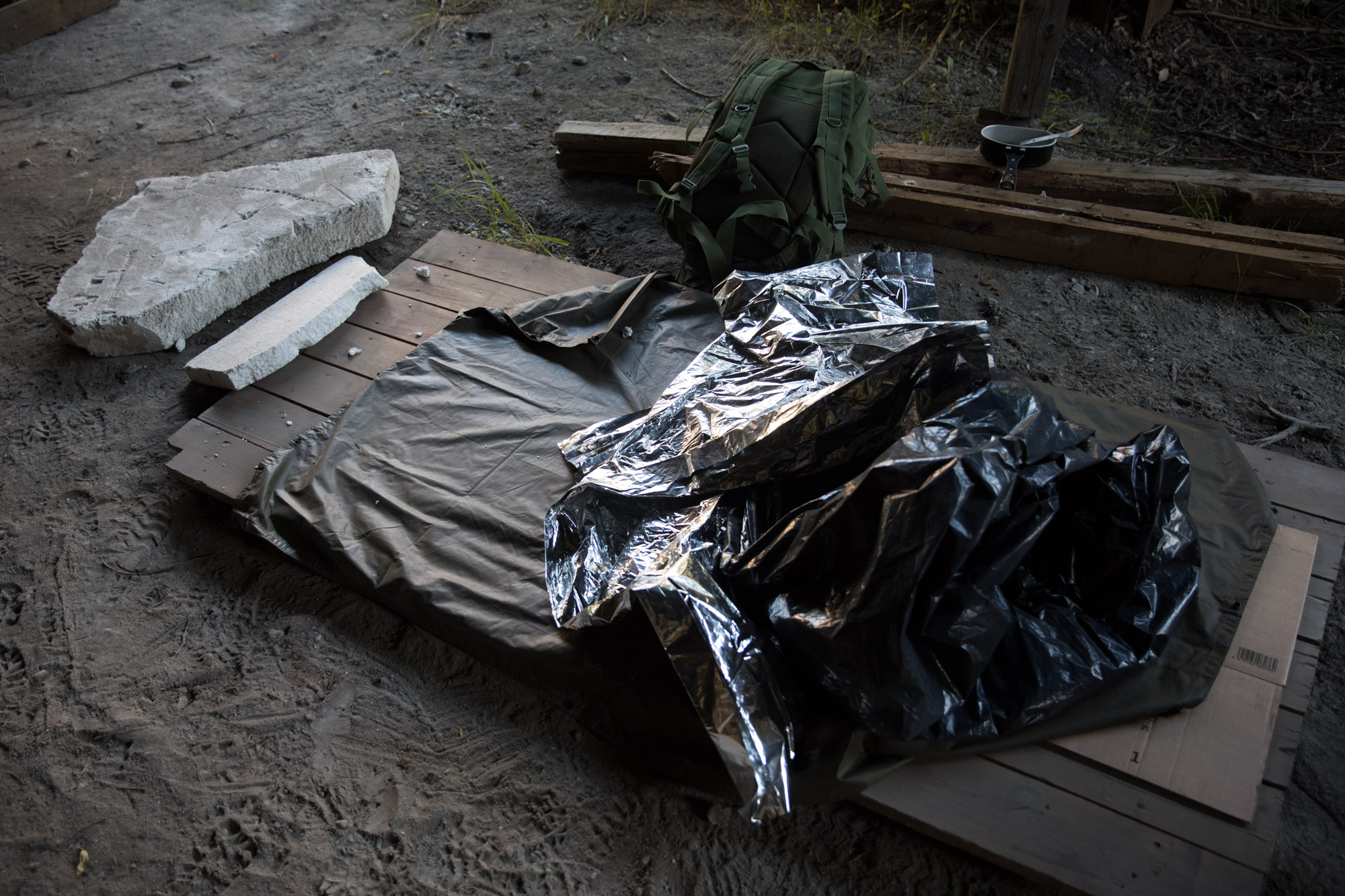
My hobo bed.
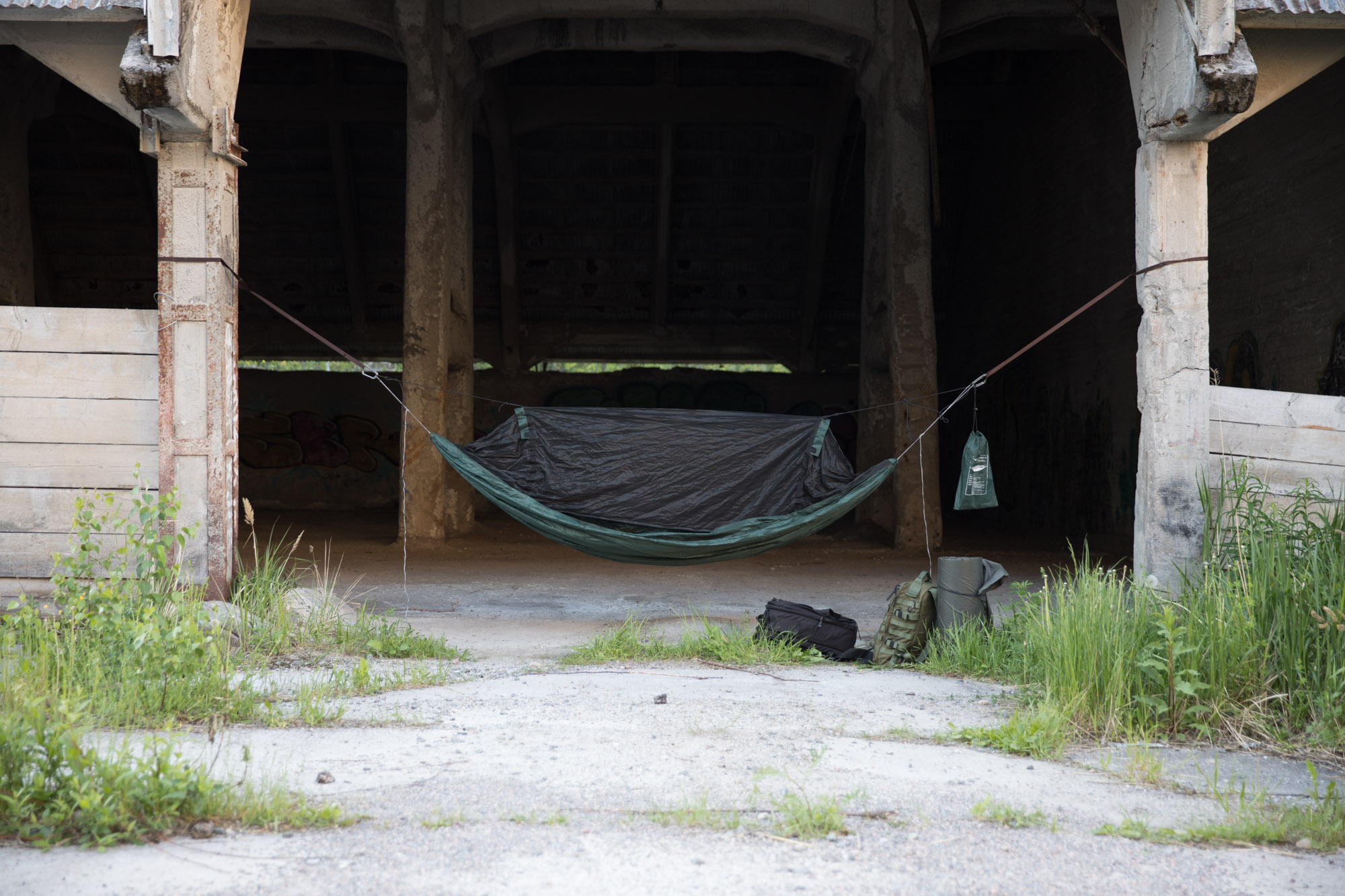
The bed you can have when you are "just the photographer".
Alternative sources of light and heat
When both groups had selected their campsites, we had a lesson on sensible sources of light and heat for urban survivors. Both improvised and store-bought. This stuff isn’t just for apocalyptic survivors but also useful in case of smaller problems, such as power outages. It is good to have a plan B for making sure you have light and heat when something like that happens. Where we live, this plan is called fire, because we have plenty of wood in the countryside. However, in cities, it is good to acquire some sort of a suitable camp stove, etc. in advance.
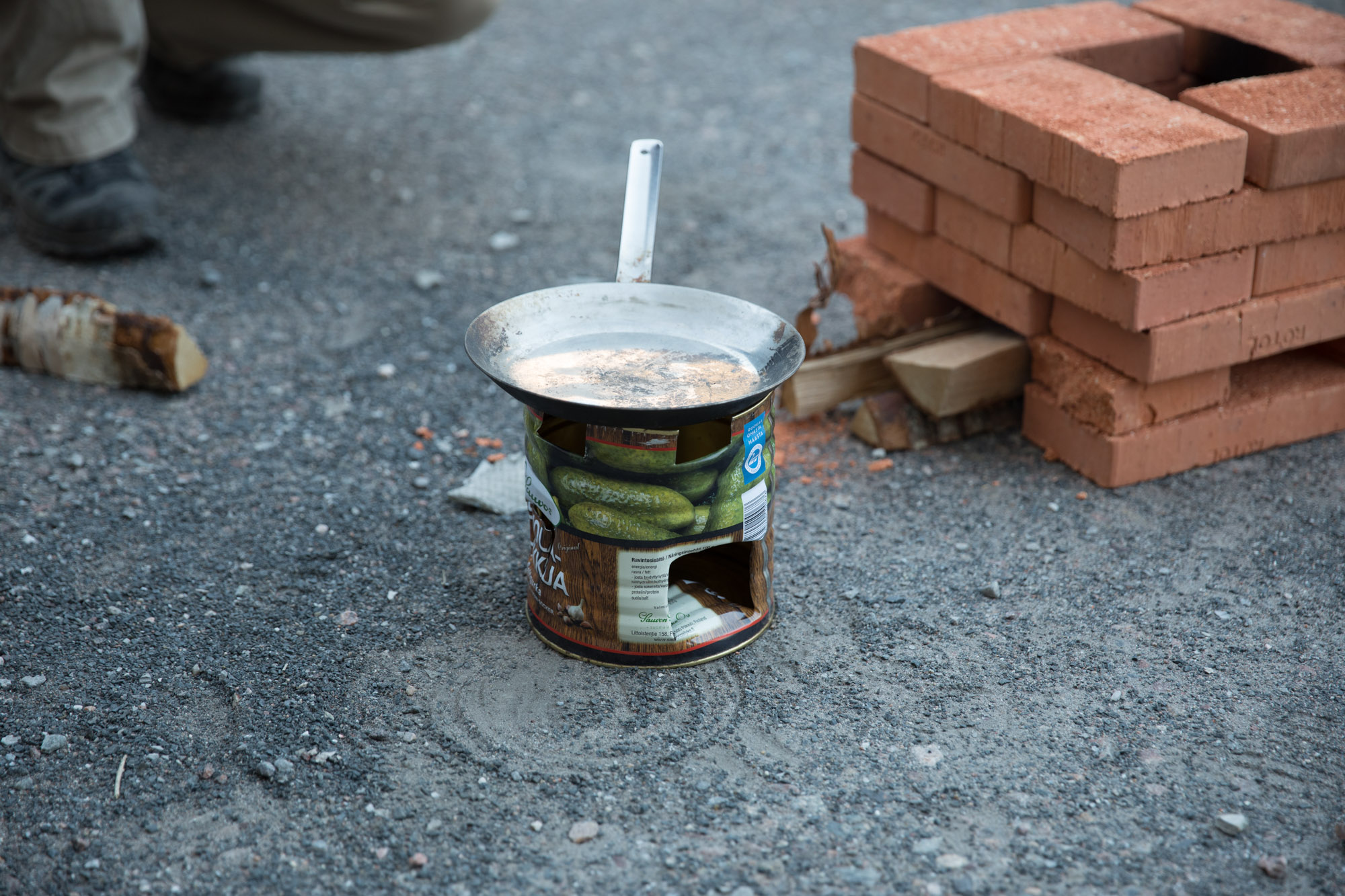
Alternative sources of heat.
We used the acquired knowledge to build our camp kitchens. Although we went with a very minimalist approach: just a narrow opening made with old tiles where it was easy to feed the fire from both directions. We could put the water container on top of it to boil water. My water bottle of choice was a LifeStraw, so I could drink from the puddles but the rest had regular bottles, so we boiled all the water. We could also have the small frying pan and a mess tin on our stove at the same time, so we didn’t need to build a grill rack. It burnt quite nicely with a very small amount of twigs. Both groups got a small batch of burnable stuff but we left it alone because there were plenty of dry twigs and loose boards laying around.
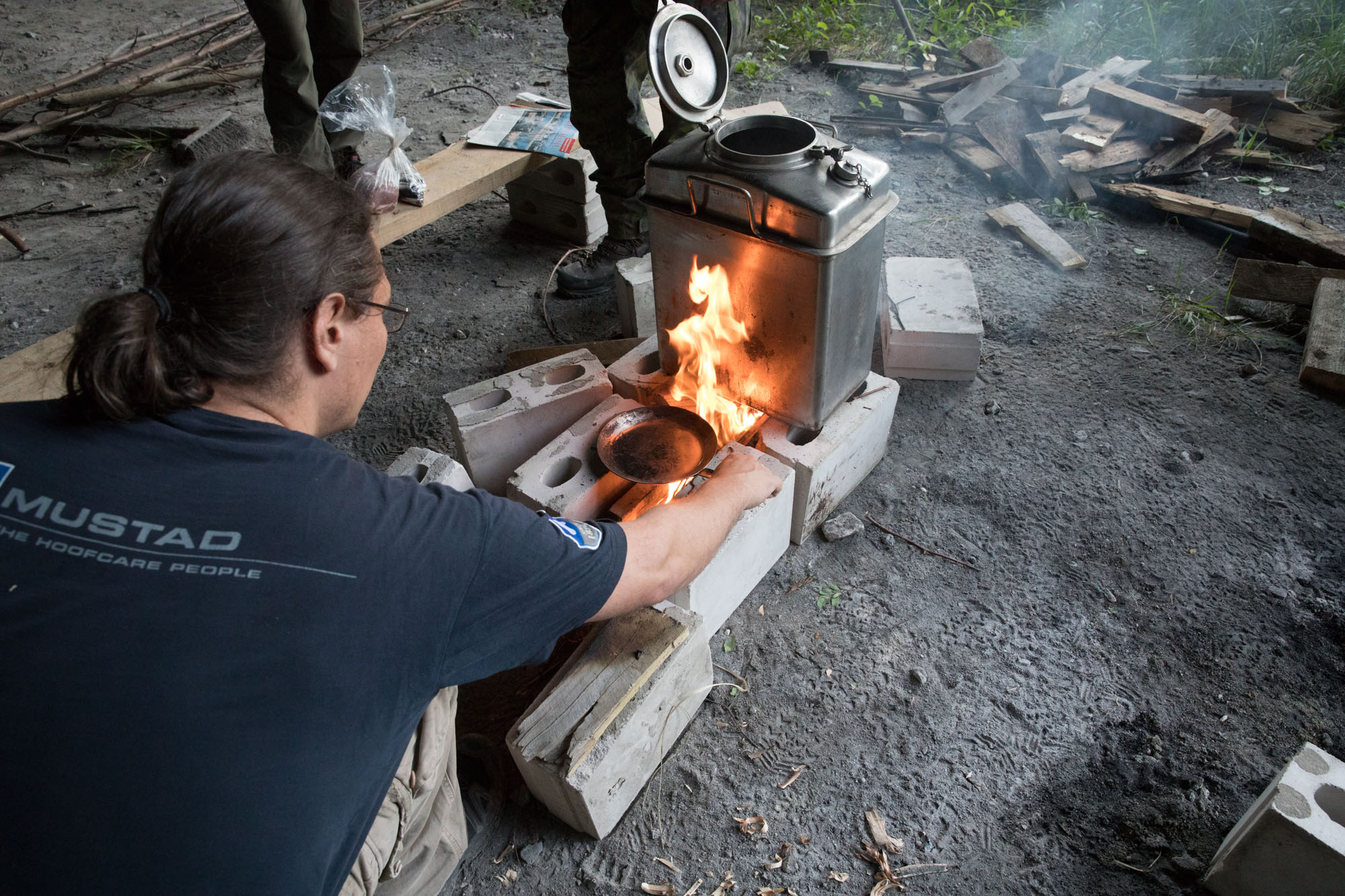
Our minimalistic kitchen.
The enemy from above
I was quite sure that the guard duties marked in the program were pure simulation but I was wrong on this account, too. The site was a popular illegal adventure park for local teenagers. There were plenty of nightly wanderers on the rooftops and in the ruins, and not everybody was happy with just exploring the place. Last night somebody had vandalized the car brought for our training purposes. So, it was possible that other things besides water might rain down on us.
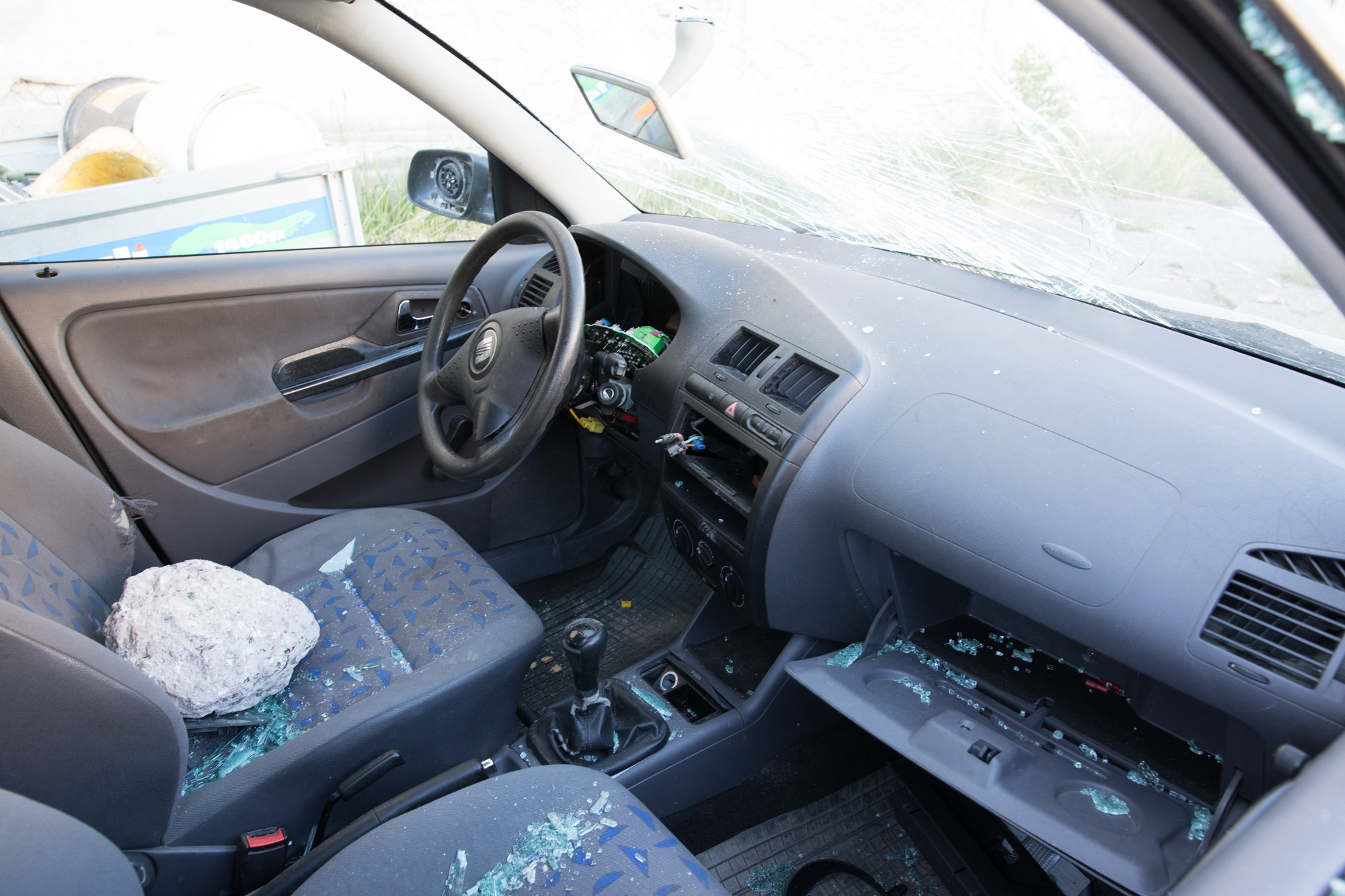
Nightly guard duties were necessary to prevent vandalism.
To make sure our cars would survive the nights and our stuff would not disappear, we built barricades to block the roads to our camps and set up guard duties. Because I am a primadonna with sleep issues, I volunteered for the first guard duty for our camp. The night was otherwise quiet but somewhere in the distance I could hear industrial metal music and nearby there was an owl hooting. The glow-worms on the dusty and graffiti-covered concrete walls gave the place an atmospheric radioactive feel.
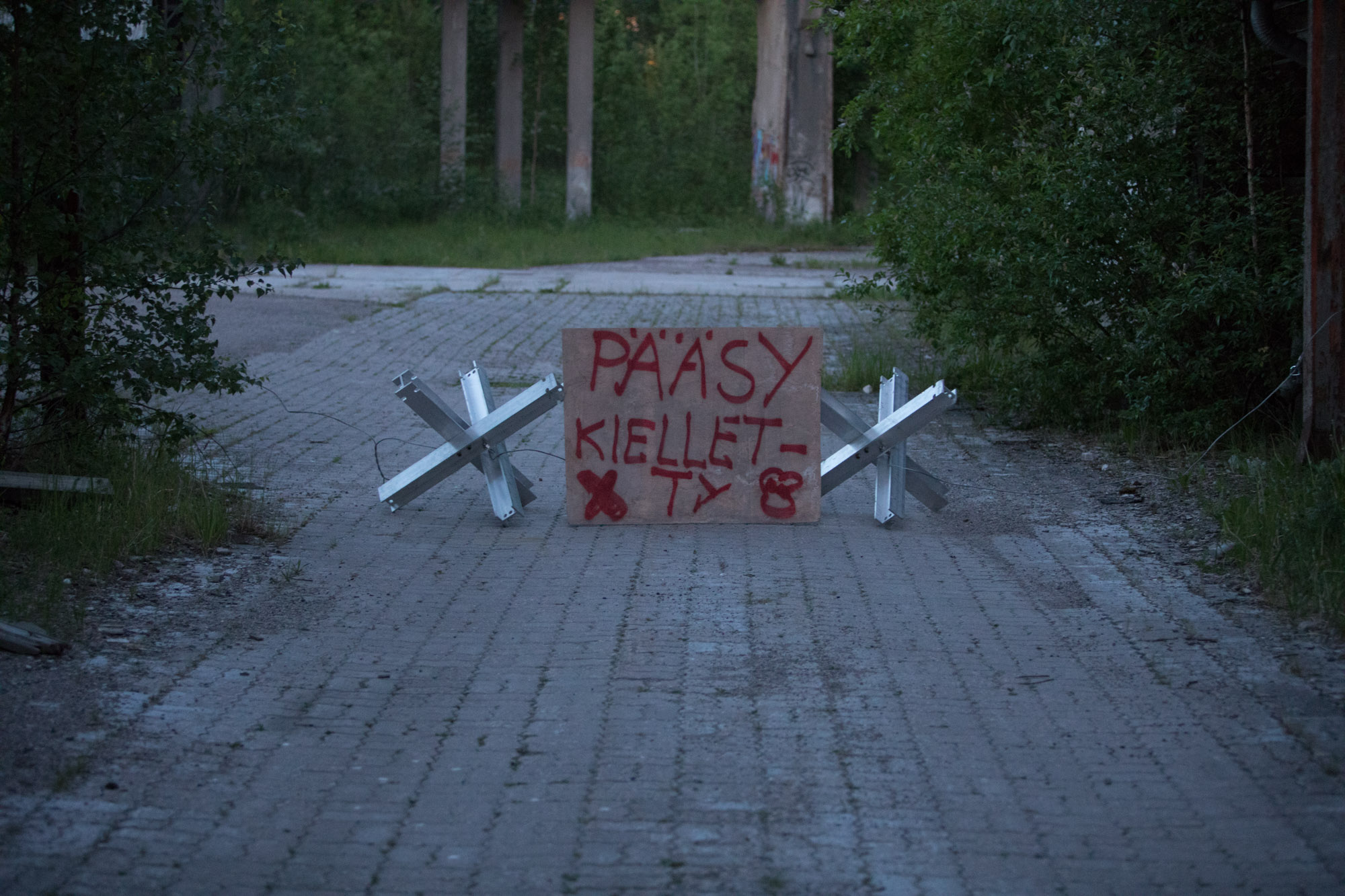
The bugger off sign is a vital part of every homely house after the collapse.
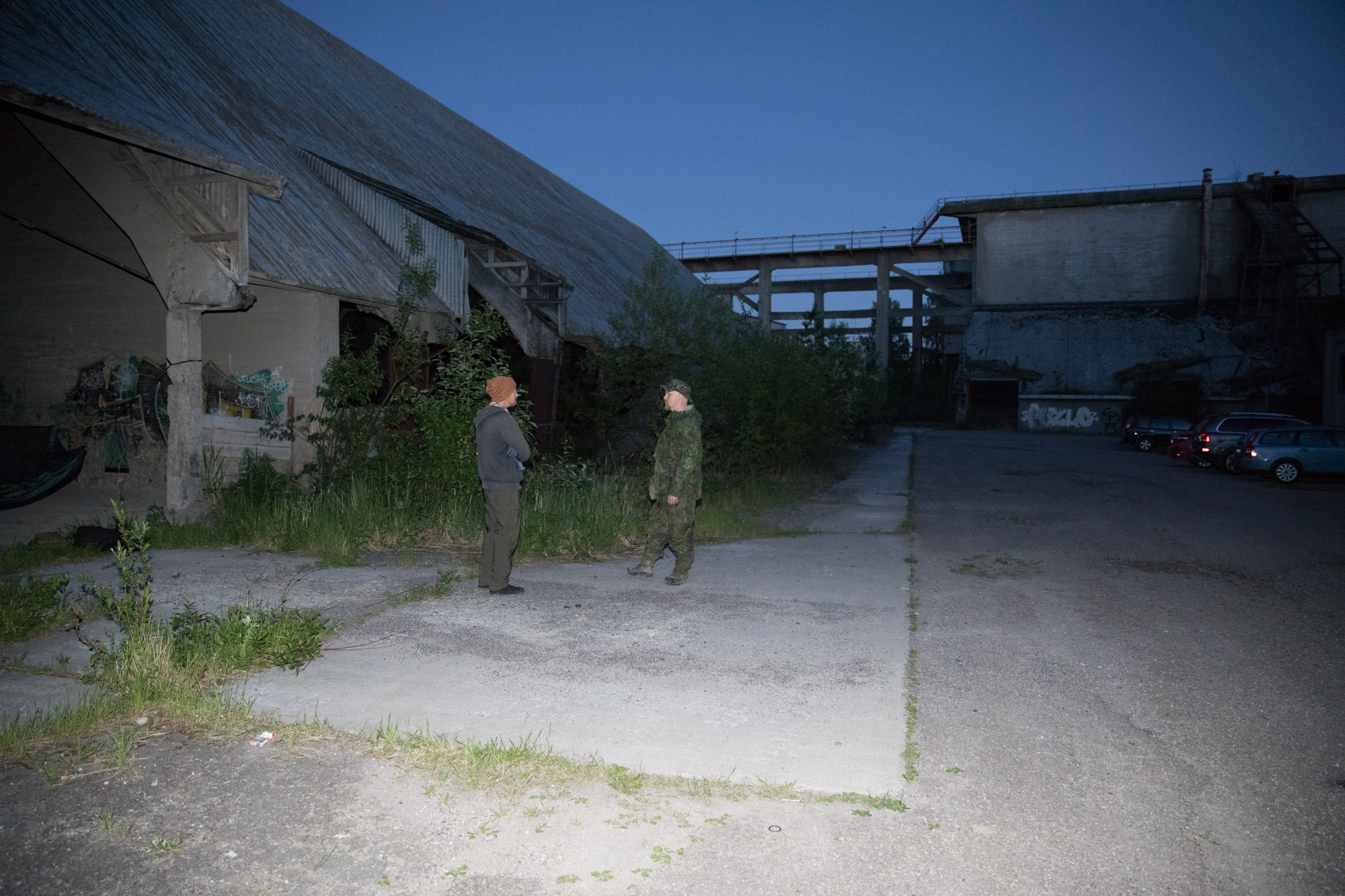
Bloodthirsty zombies and teenagers didn't harrass the guards.
Brain-eating zombies and teenagers stayed away, and finally it was time for me to retire to bed. As I laid down to sleep, I was surprised how comfortable the rock hard planks were. What I mean is that they weren’t comfortable at all but I had imagined them to be infernally unpleasant. I could of course have picked some hay to make it softer but the region is quite full of ticks, so it didn’t sound that smart. I’d rather have a little bit of discomfort than some mystical brain plague.
If you have never slept in a trash bag, I can warmly recommend it as a sort of a spiritual journey. It didn’t get that cold during the night, just +14 degrees Celsius (57 F), so the non-breathing bag first got you to sweat like a pig. As the sweat cooled down, it got a bit chilly. Furthermore, our campsite had some thirsty mosquitoes. The Recon Smock has a very nice big hood and I had also taken along a Särmä TST Balaclava and a mosquito net. So, the buggers couldn’t really bite me but the ear-piercing buzzing felt like howling Stukas and kept me awake for quite some time until the merciful darkness finally took me and I fell asleep.
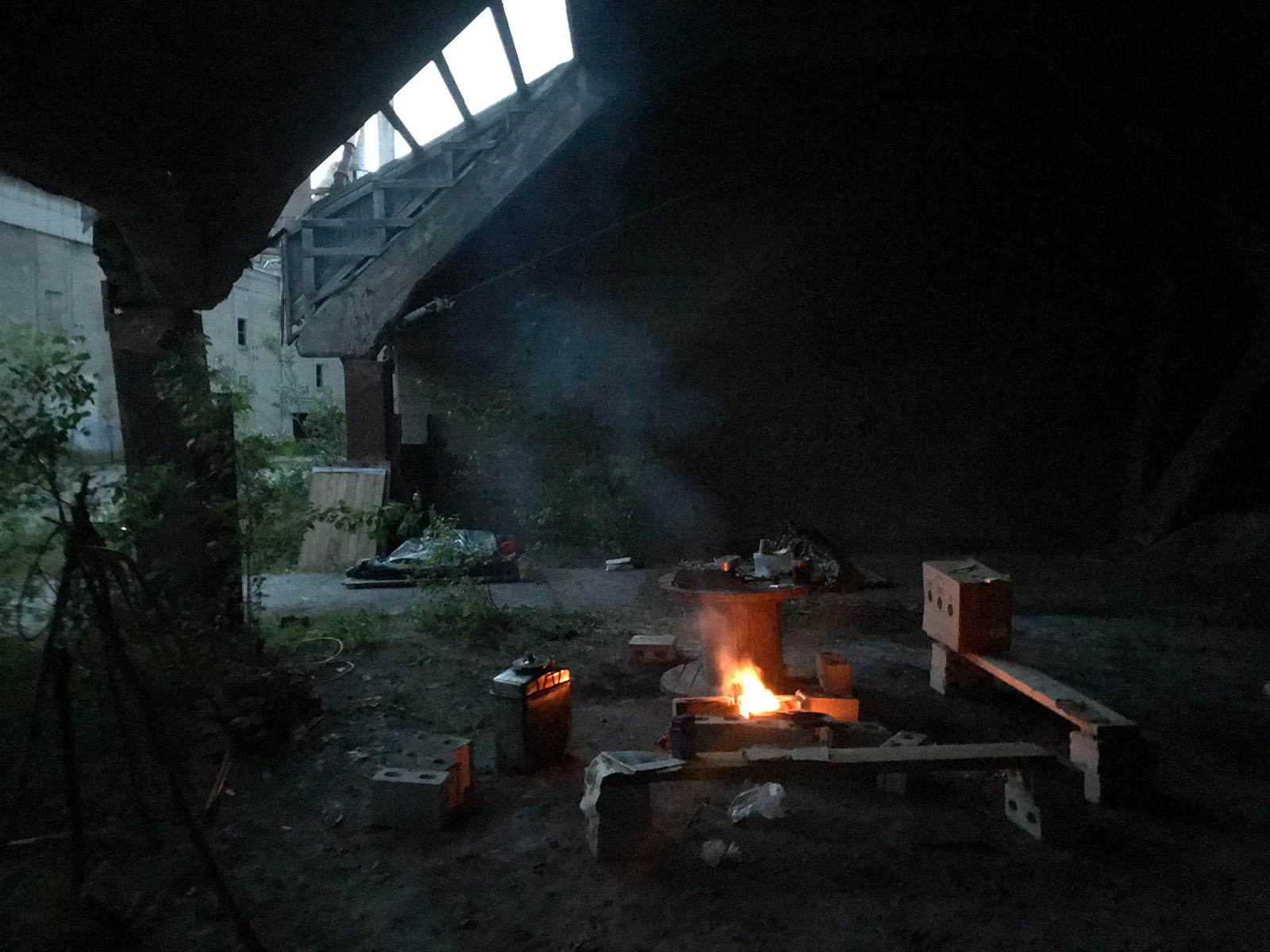
The whole camp except me, the guard, and the mosquitoes sleep.
The second day
After an invigorating hour’s sleep it was time to start a new lovely day. It hurt a bit here and there but that’s what I had come to experience so my mind was clear and bright. After the morning porridge spiced with spruce growths picked nearby, we went through the previous day. Everybody was still in pretty high spirits and eager to start the day’s lessons.
Burning and extinguishing various liquids
During the first lesson of the morning, we learned to burn and put out flammable liquids and how to use them in e.g. improvised torches. We got to test the fire blankets and powder extinguishers, which was great because you don’t get to train it often enough. This part is useful for all campers and anybody handling fire. We were in luck because the region hadn’t yet banned open fires despite the heat. It happened immediately after the course.
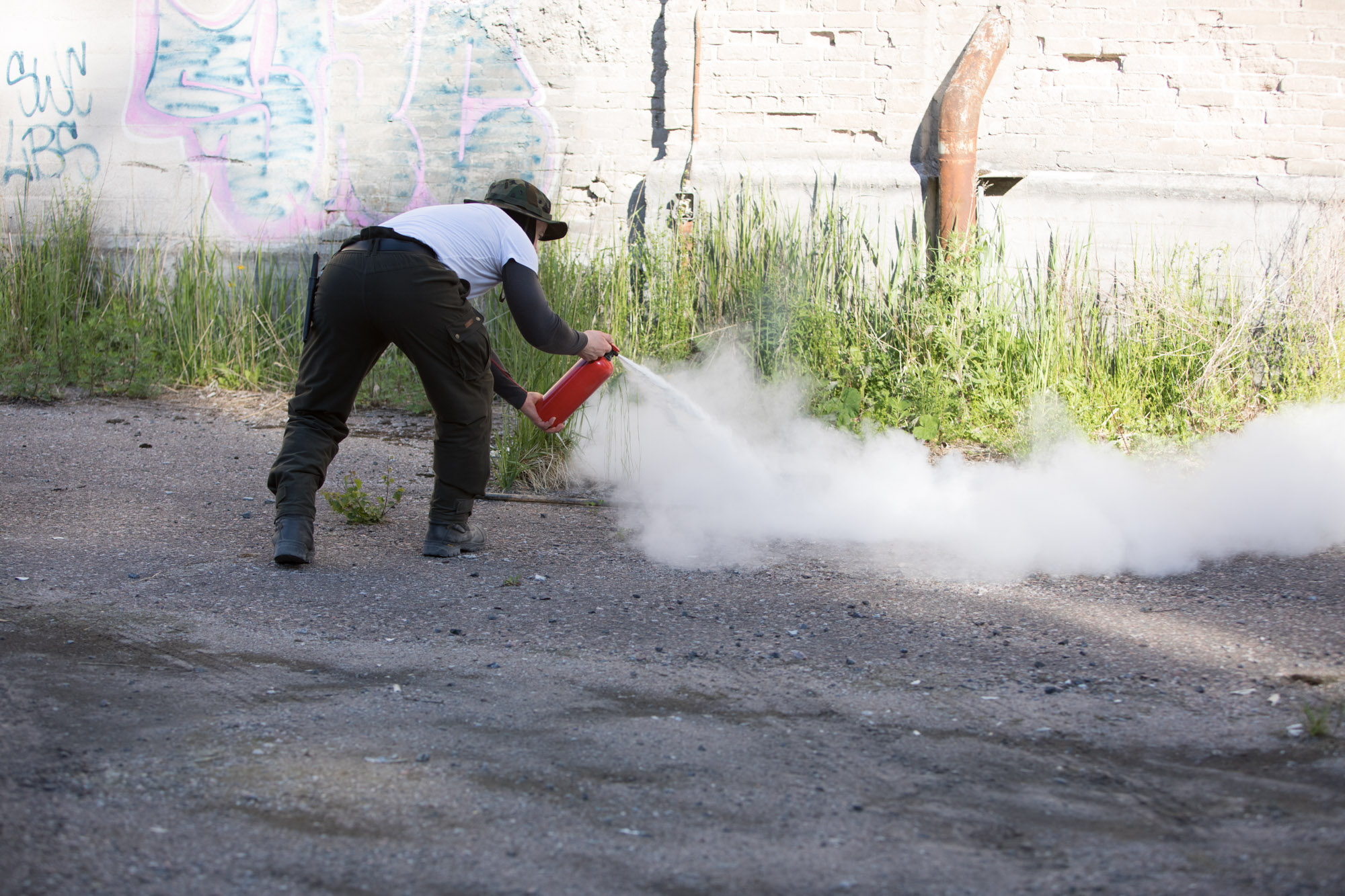
Juho practicing to use the powder extinguisher.
The basics of hobo electricity
Next we familiarized ourselves with car electricity in the perspective of post-apocalyptic hunter-gatherers and built lights for our camp out of a car battery and lamp. It wasn’t that necessary in the Finnish summer but quite nice to know anyway. Furthermore, we removed the car stereo and used it, the speakers, and the battery to build a working radio for important news following a catastrophe. Even though I am not a tech-dude, it was quite satisfying to take things apart, get the light to work, and some sound out of the radio. We didn’t hear the post-apocalyptic news but at least we got some golden oldies to lift our spirits. Another positive thing was that nobody electrocuted themselves.
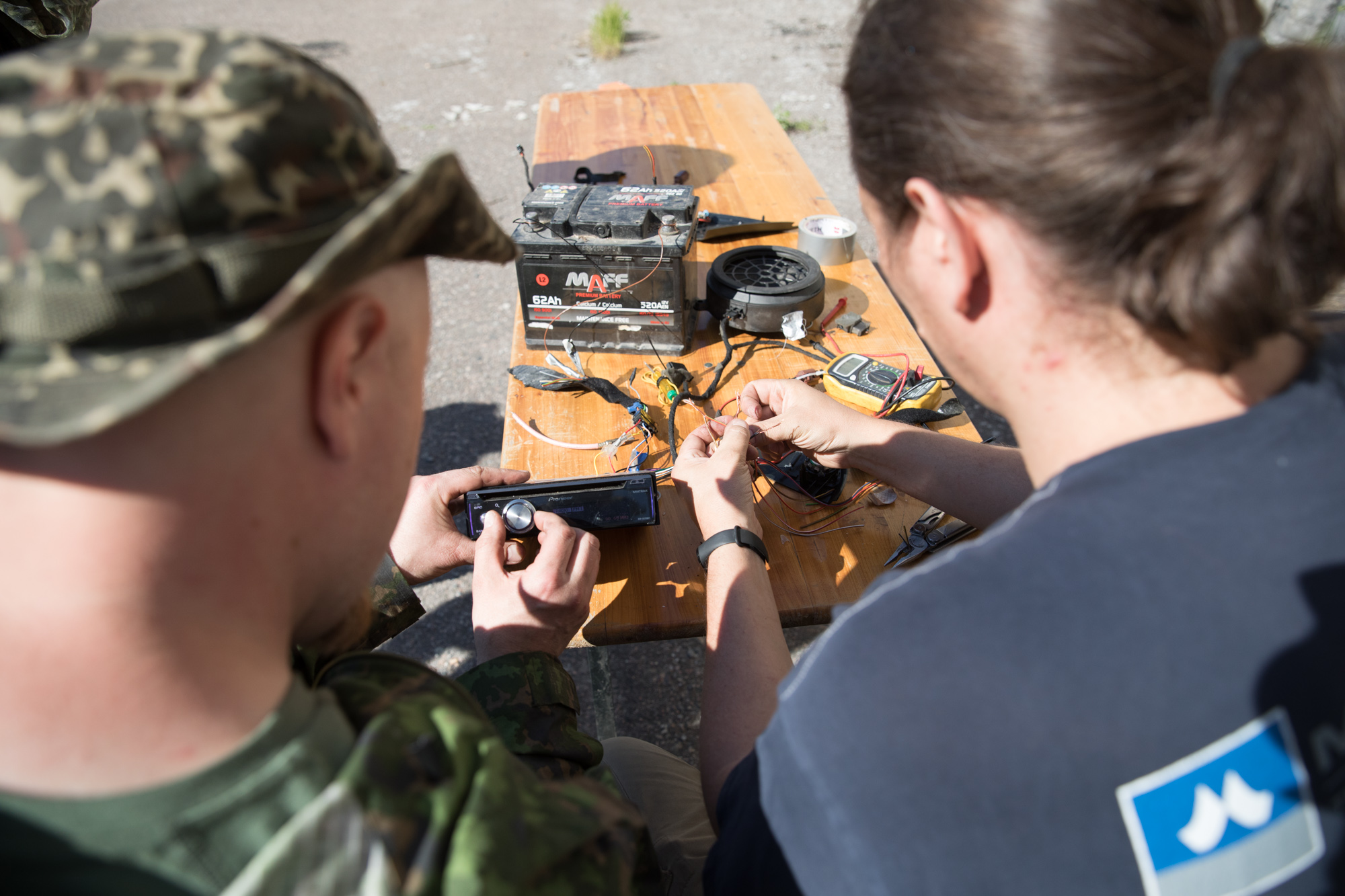
Mika fixing the radio and me smoothly pretending that I understand something.
First aid
After electrifying moments it was time for the first guest teacher who wanted to stay anonymous because of his profession. Nevertheless, he had a very strong background in SWAT team work and extensive experience in international combat medicine. The emphasis of the class was on how to treat people when there are no hospitals or pharmacies. The quick answer. Very poorly.
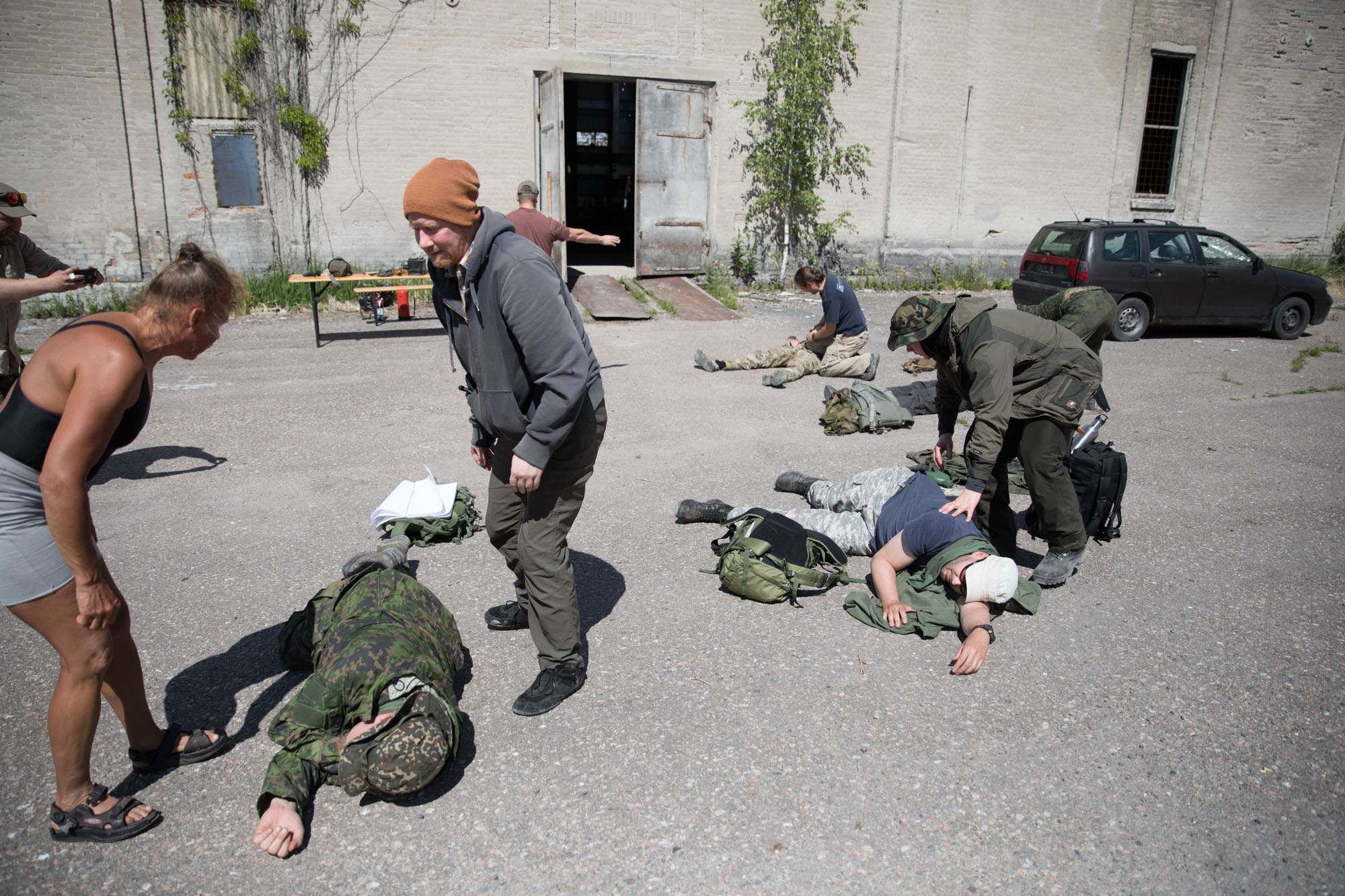
First aid training.
If the system collapses, the emphasis is on how prepared you are and how good you are at preventing accidents because treatment options are limited. However, there are some things that you can still do if something happens. We learned what kind of medicine you should try to keep at home and what doesn’t survive long storage. We also practiced how to diagnose an injured person and what kinds of injuries you can treat with limited resources.
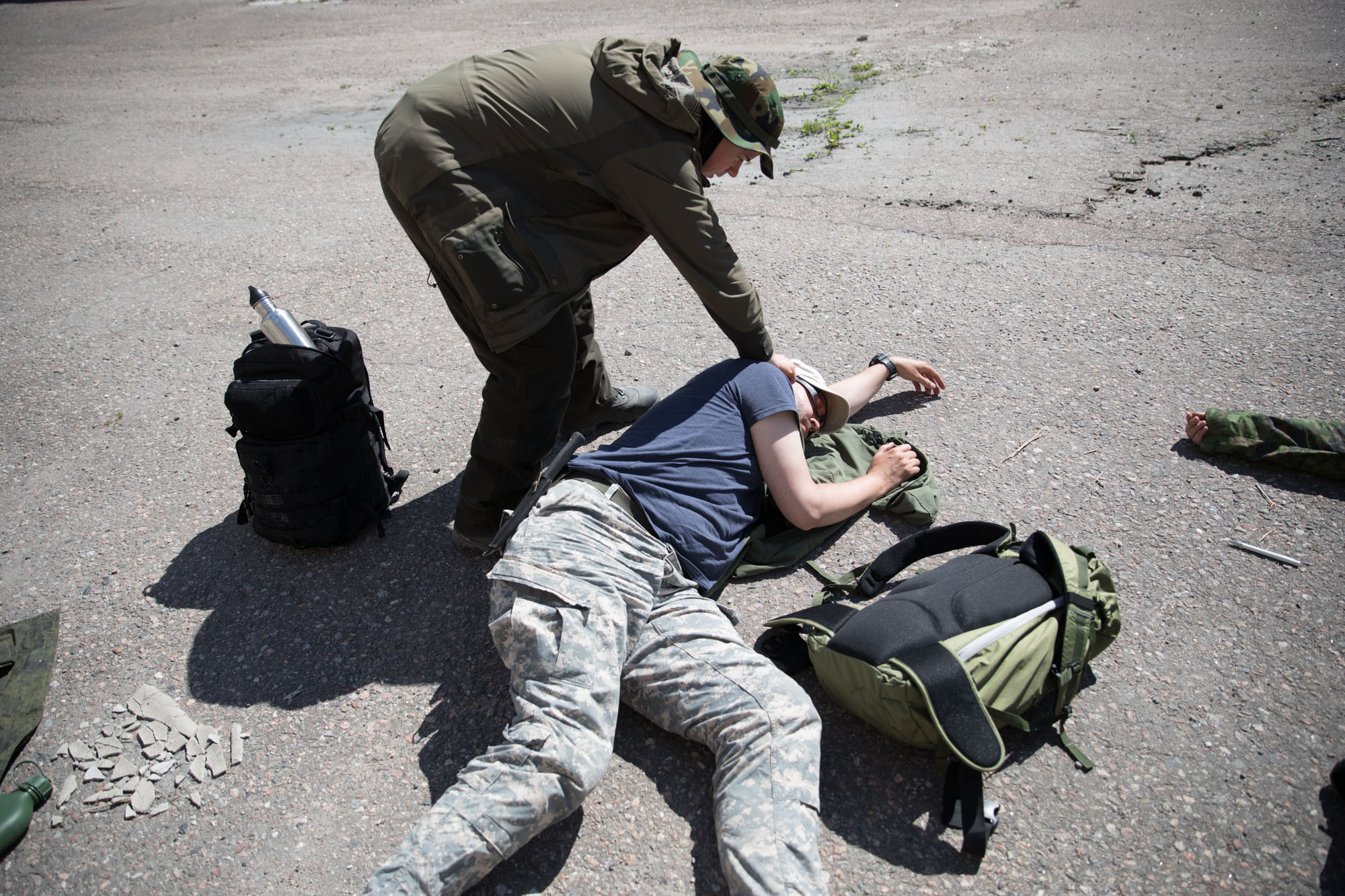
Juho checking what's wrong with Juha who is unconscious.
In addition, we learnt to use the tourniquet. This is also extremely useful for hunters and hikers. If you get badly hurt in the wilderness, a tourniquet will buy some precious time. It is well worth learning to use it and keep it with you because you might save somebody’s life with it one day.
This lesson was very interesting, practical, and took longer than planned because people had lots of questions. Most of the stuff was quite adaptable to modern-day situations but there was also some stuff only applicable to situations where there is no infrastructure left for one reason or another.
Communications and breaking & entering
Next we became acquainted with different sorts of communications equipment from CB radios to VHF radios together with solar panel chargers. The latter ones are pretty handy for blackouts as well.
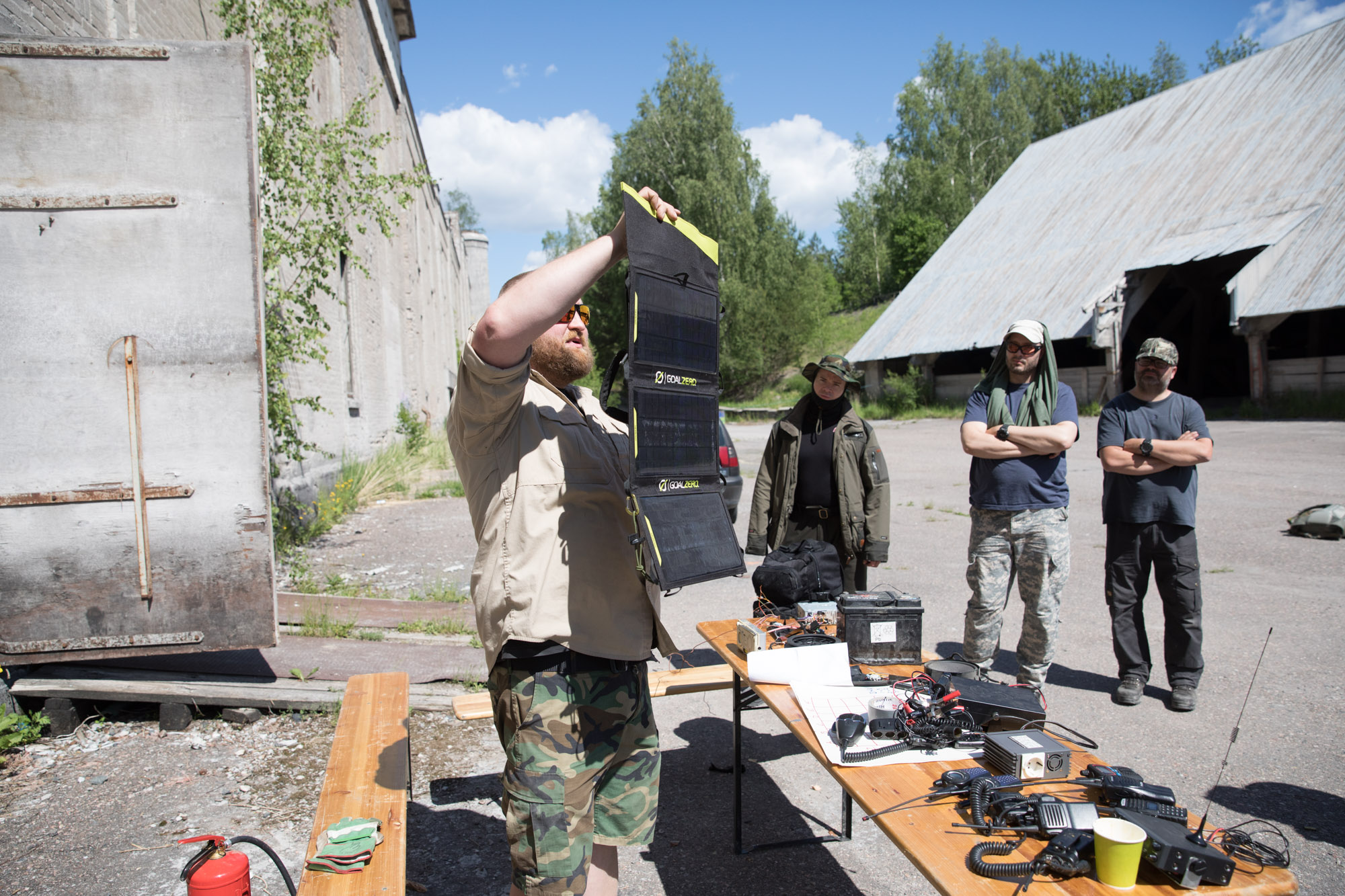
Solar panels can be useful also during blackouts
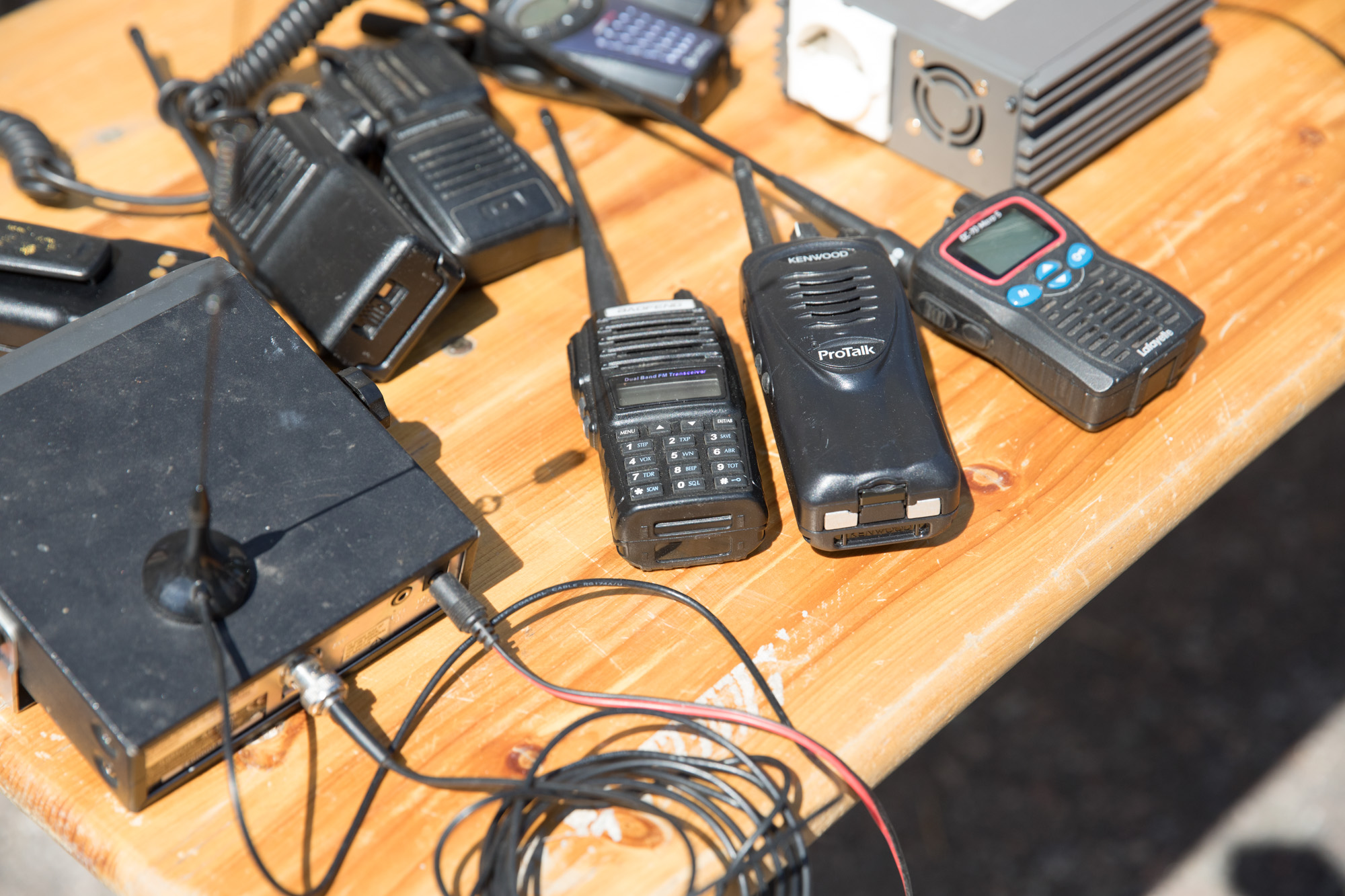
Different kinds of communications equipment
Then we got into some functional stress relief in the form of breaking stuff! We had a short lecture on the tools that could be called the master keys after the society has collapsed. Next we tried breaking through house doors and shattering car windows and going through the car door with a crowbar and sledgehammer. One thing you learnt was that you better burglar-proof your door because the basic doors are quite easy when you have the right equipment. Of course this door was even easier because of the frames but still.
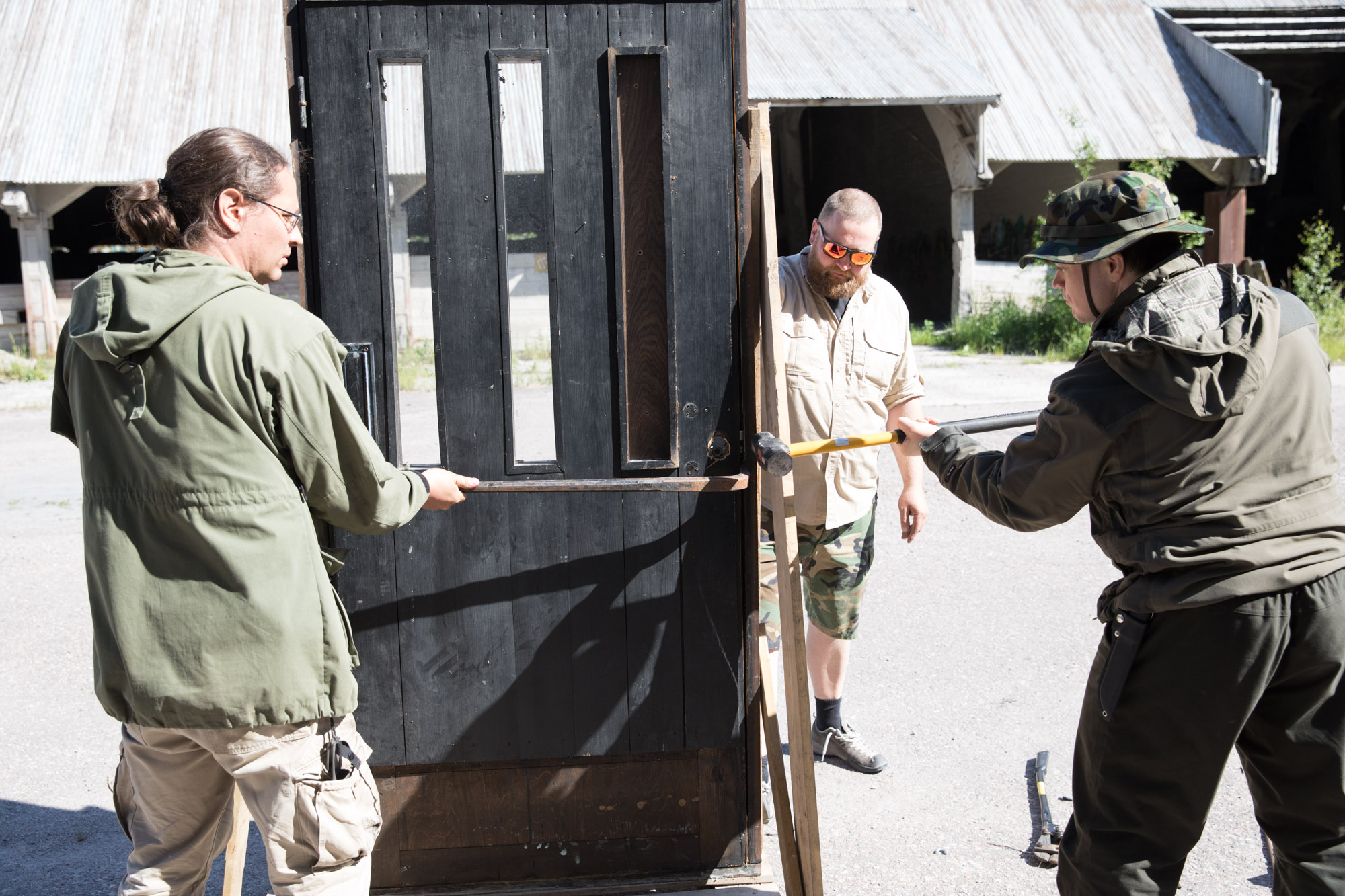
The car window broke joyously with the right tools but the door was very problematic. It took a lot of sweat and perkeles to go through it, and even then the lock survived, the metal around it just gave up. This stuff is quite useful in case the civilization crumbles. However, it is good to know about these things when protecting your own property from those that won’t wait for everything to fall apart.
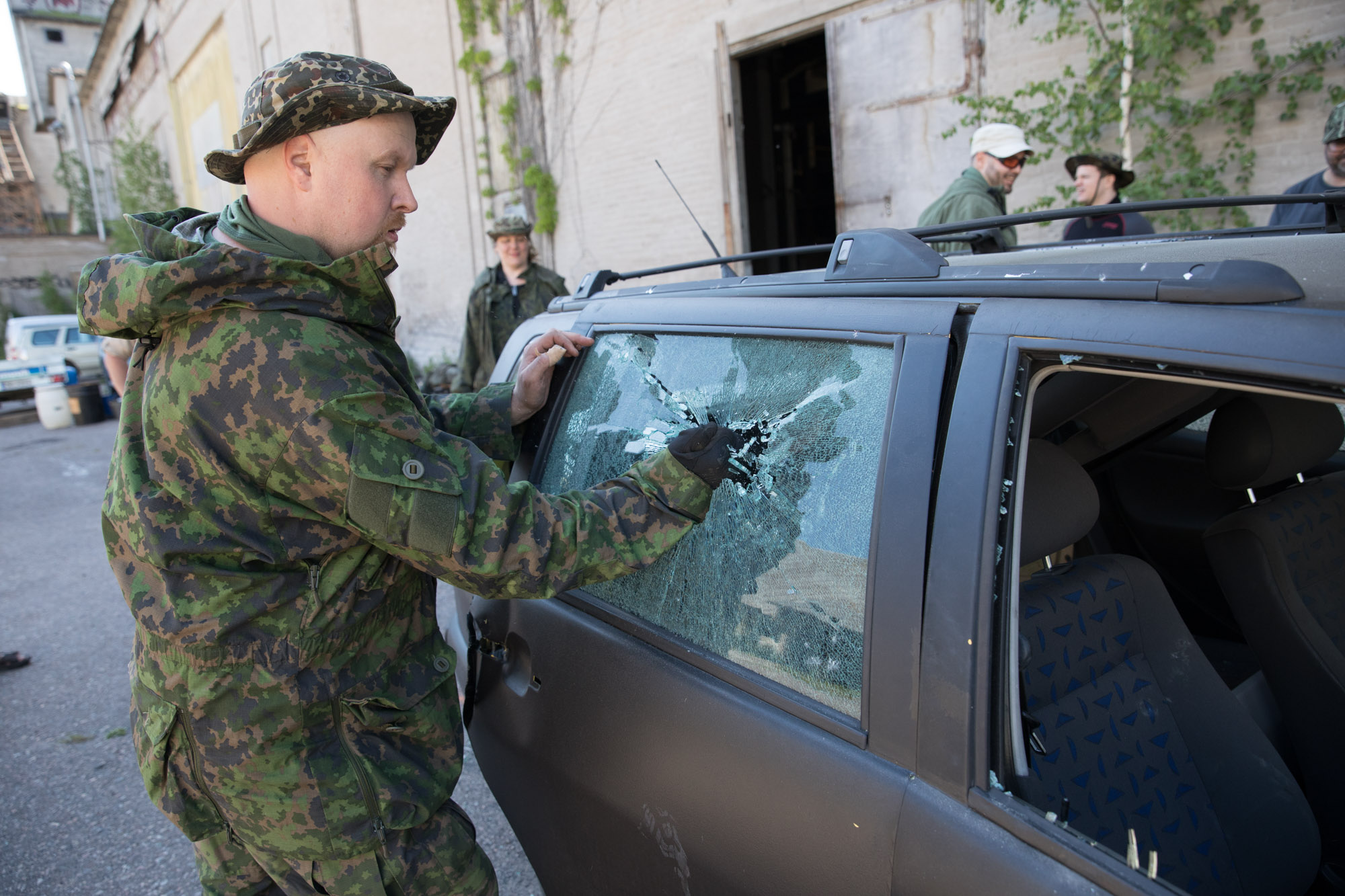
You should always have a window breaker and a strap cutter in your car in case of collisions in case the door won't open
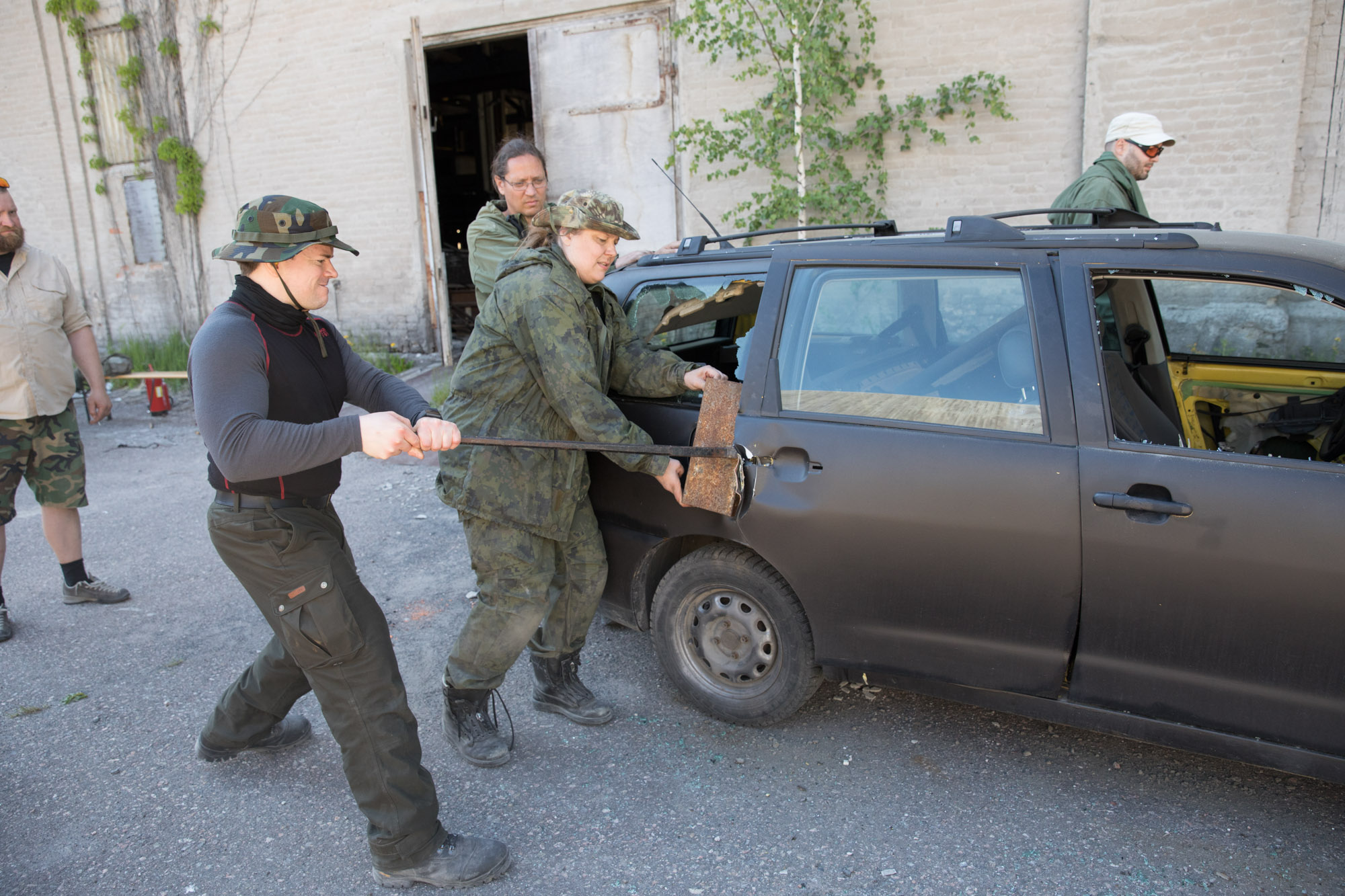
Juho and Sari opening the car door without the key.
Little sauna at the end of the world
The final project for the evening was to build an improvised sauna. After all, Finnish preppers must have a sauna even when the civilized world is no more. So, we made some shampoo out of birch leaves and constructed the sweaty room out of a tarp, loose boards, a barrel, bricks, and a piece of pipe. We hauled the water with a rusty old bicycle. Some people went into the sauna, some chose to maximize their misery by marinating in their own goo. I was part of the latter crowd because washing up without the possibility of switching into clean clothes felt a bit counterproductive.
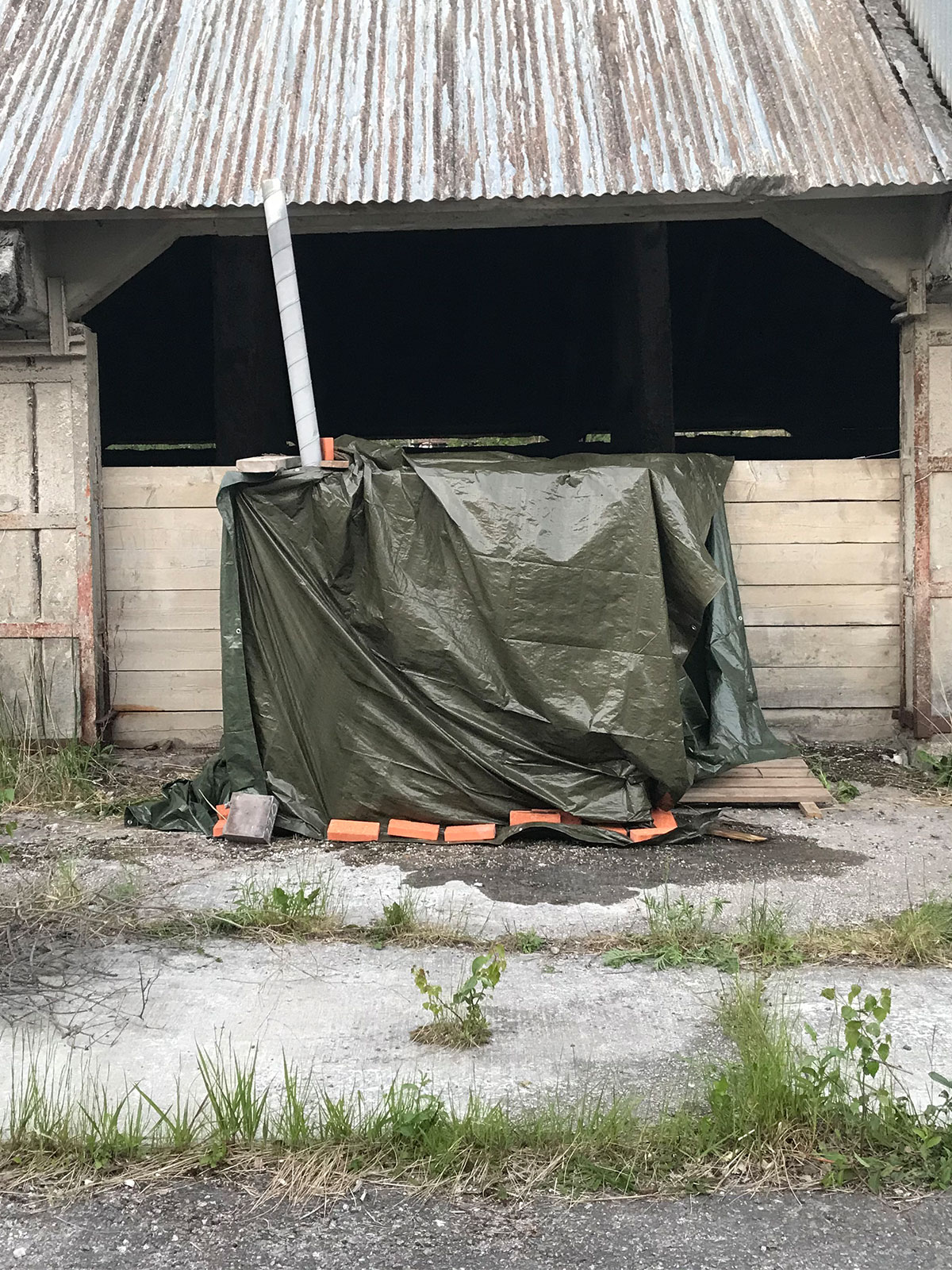
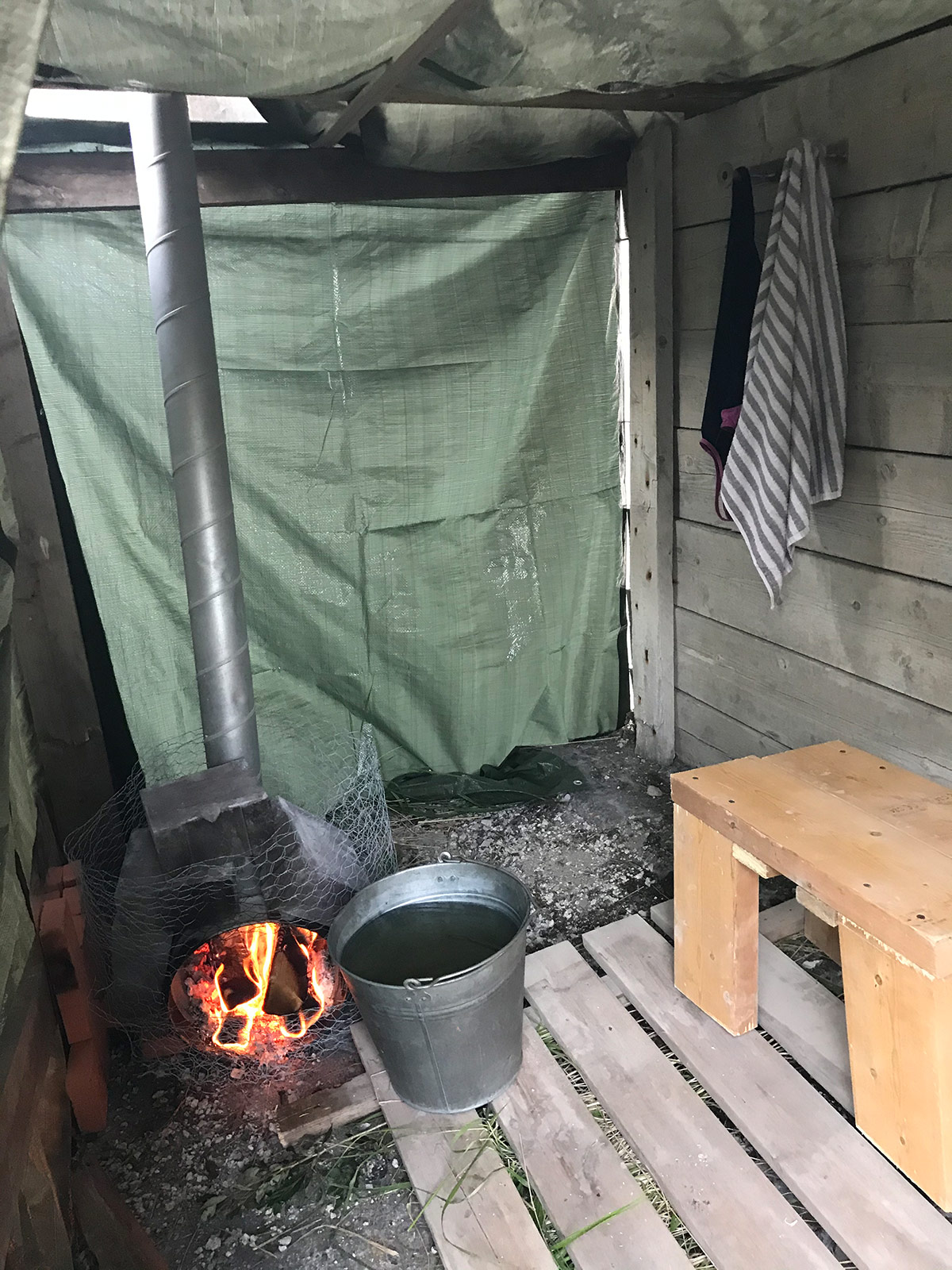
Post-apocalyptic sauna.
The night went with guard duties and simulated sleeping. This time the temperature dropped below ten degrees Celsius (48 F), and I had to put on the warm mid-layer shirt. I also managed to get hold of earplugs, so adios to the mosquito reign of terror. Thus, I managed to sleep for the whole three hours!
Third day
Even though I don’t get cold that easily, I have to confess that in the early morning hours it got so chilly that I had to get up and warm myself by the hobo fire. The sweaty hug of the trash bag combined with the dropped temperature and windy weather did its job. This time I was so tired that the planks felt like a feather mattress but the cold drove me up.
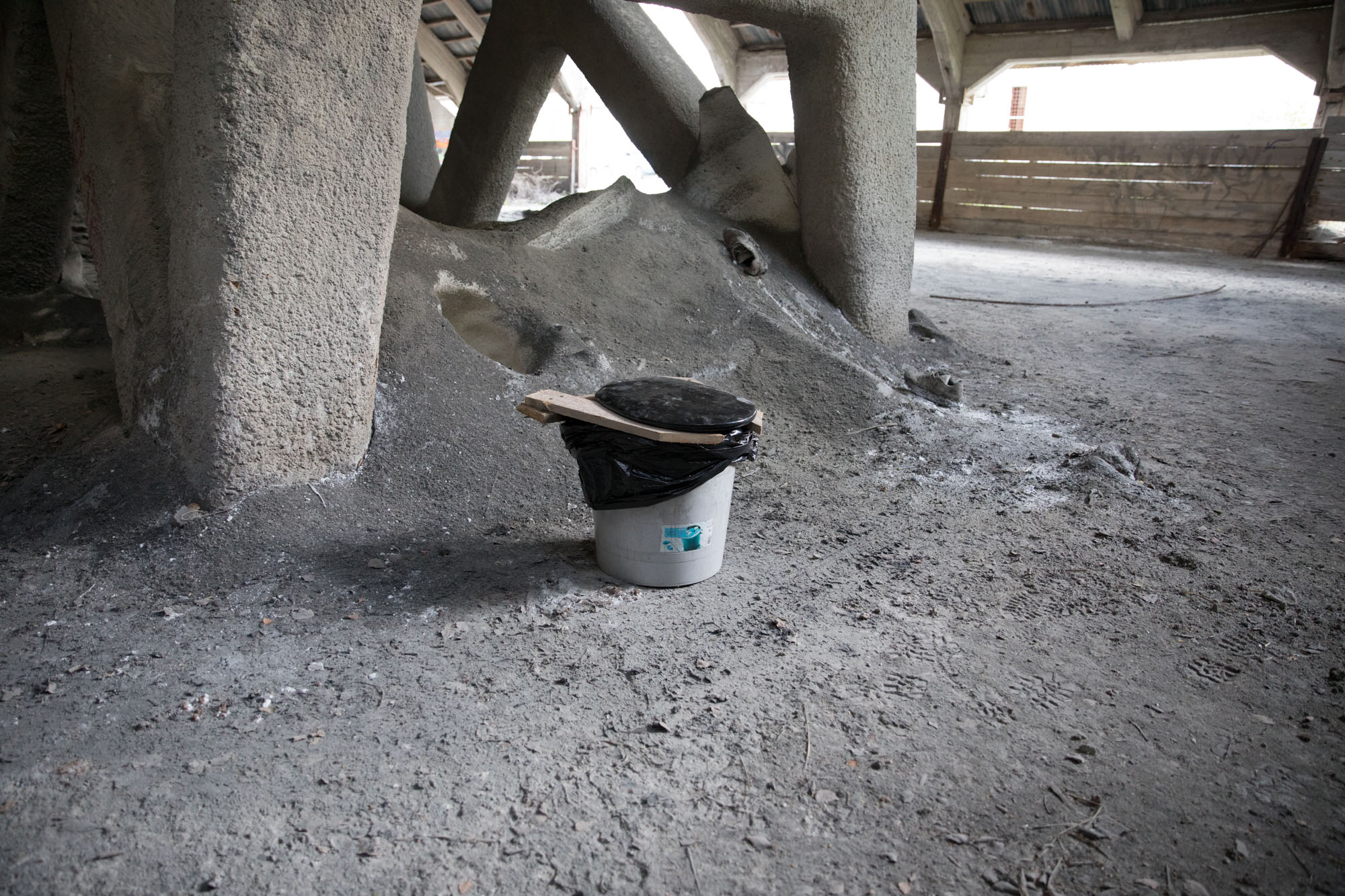
You didn't want to spend too much time in this toilet.
Chatting without electricity
The first lecture of the day was about communicating after the electricity is gone, which is eventually the likely scenario when everything collapses. We agreed on three communication methods and ten messages that we then communicated between the groups. In the beginning, it didn’t go as smoothly as planned. Had it been a real situation, lots of stuff would have burnt down while trying to figure out the messages, but soon we got the hang of it. One thing we did learn was that it is worth communicating the urgent warnings with loud alarm signals.
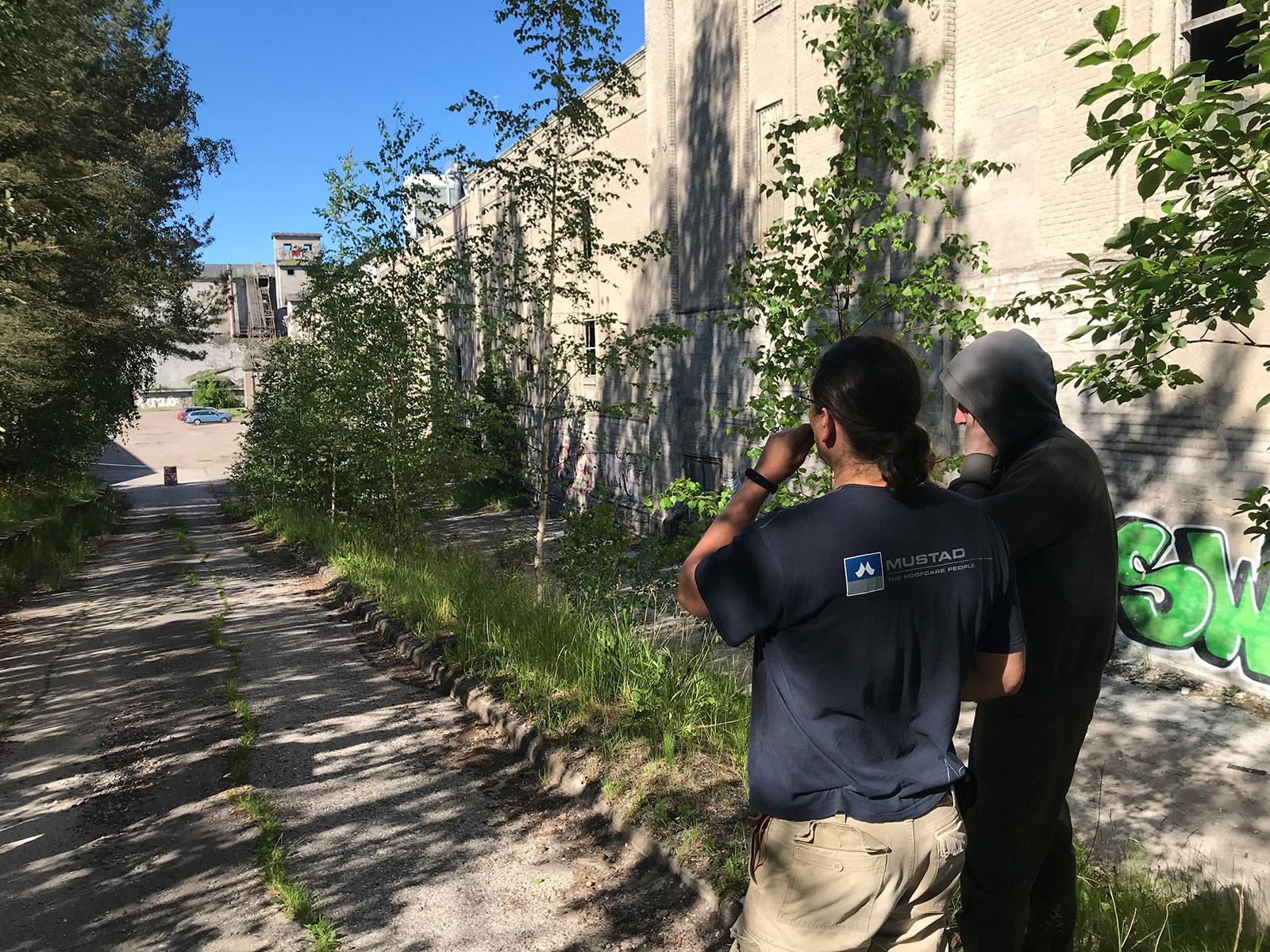
Communicating with lights, sounds, and signs.
Bad boys
The second visiting teacher was Tom Packalen. He is an MP but he didn’t come there as a representative of the parliament but instead as a police officer telling us about possible threats that can emerge when laws are gone. Before his political career, he worked as an undercover cop investigating organized crime.
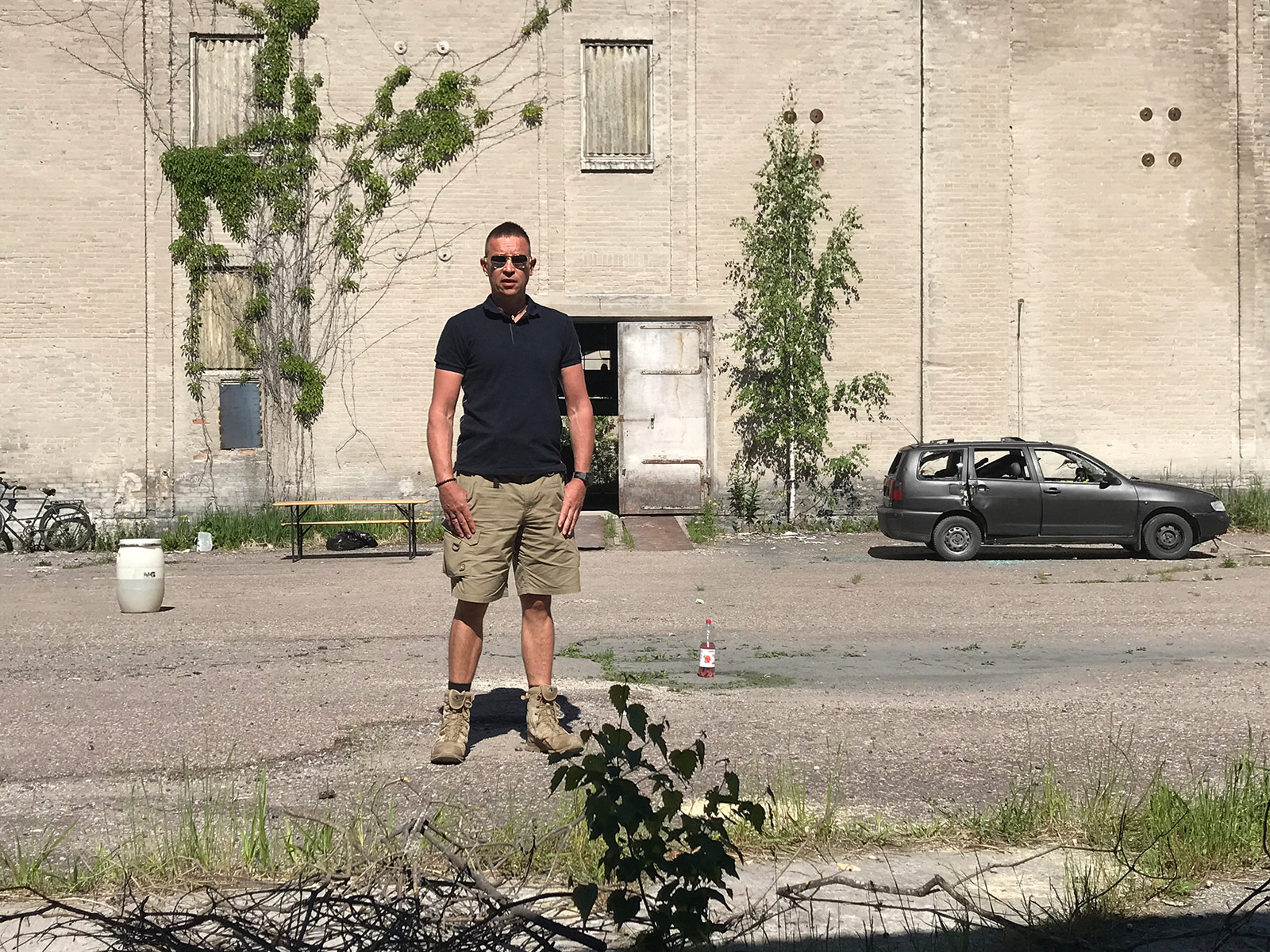
He taught us how to identify possible threats, how to avoid nasty situations, and what kind of weapons the criminals carry and where. Even though the main emphasis was on the world after the fall, most of the things could be applied to the present day, too. This lecture also went on overtime because there were plenty of questions.
Bug out housing fair
At the end of the course, we went to look at each others’ camps and both teams got to explain why they selected the spot and what was good and bad about it. The other group had opted to sleep very close to each other in a tight formation. They also chose to stay in the main building but found a less dusty corner. Both were quite happy with their choices. Of course one has to mention that both camps were built for a very brief stay in summertime. After the summer, we would have had to move to a better insulated place and put a lot more effort in building the beds.
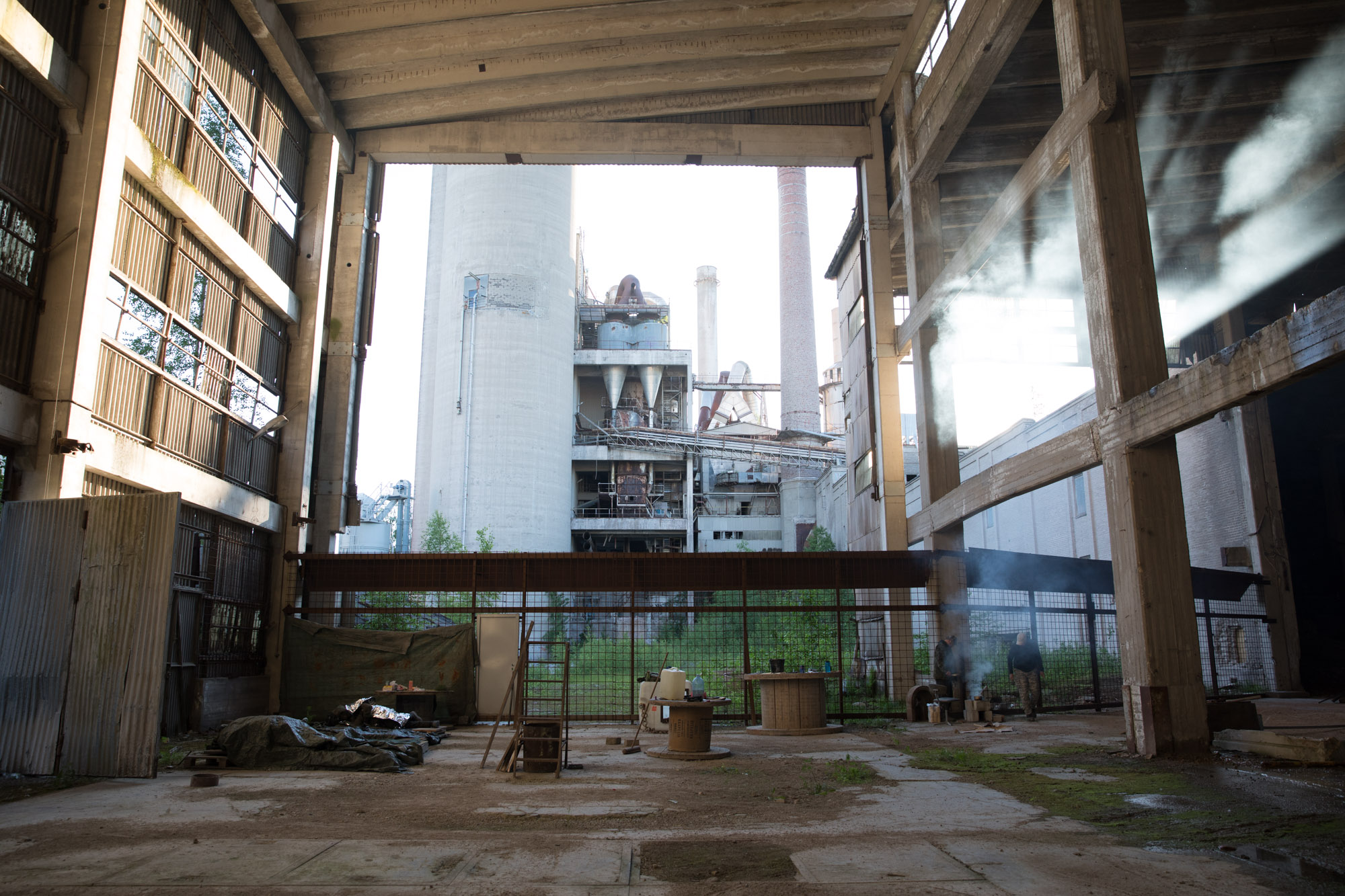
Neighboring group's urban encampment.
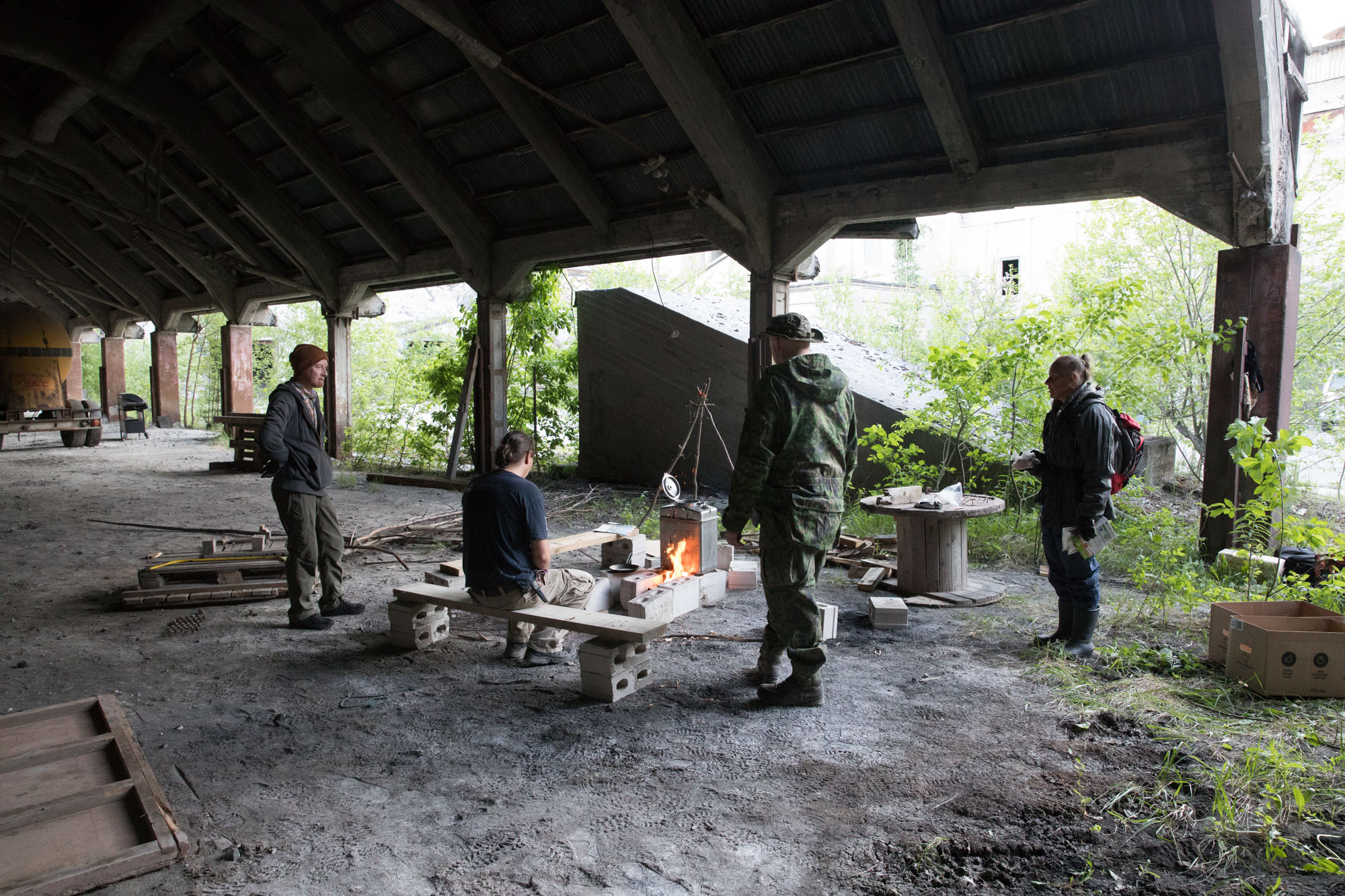
Our airy elegance.
How about the grub?
There wasn’t that much free time during this course, the program was that intense. For this reason, there was enough food reserved for us so that we didn’t have to spend time searching for it, only preparing it. Had it been a real emergency, there would have been food available since there was a fairly big lake close by and there were lots of hares and pigeons everywhere.
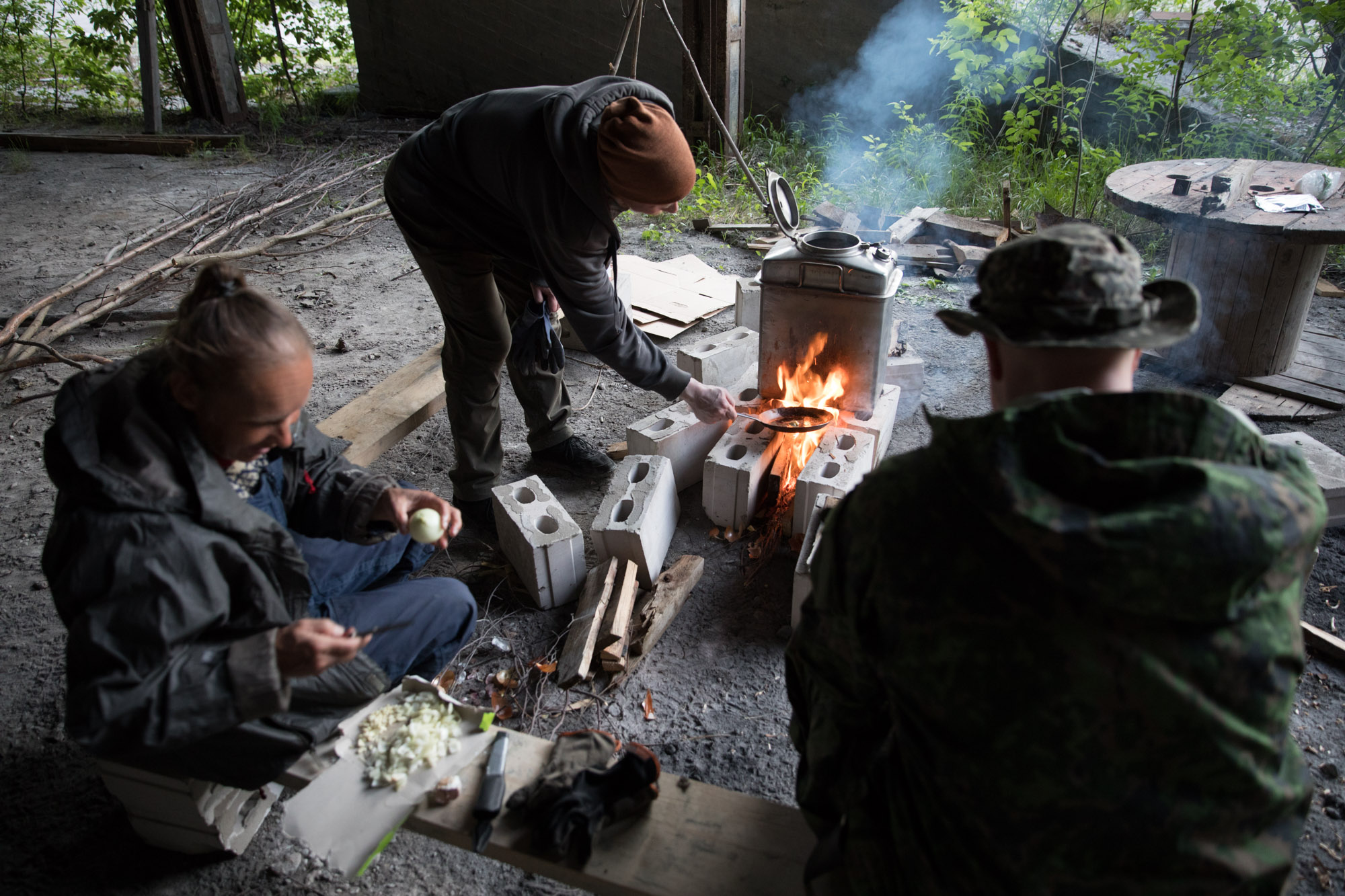
Both groups got dry pasta, noodles, instant mashed potatoes, a small bag of fresh vendace, a small lump of meat, and this and that small. Enough to get us through the weekend. Both got to prepare it as they saw fit. We added some fresh spruce growths to spice it up, for example.
Final thoughts
I’m the type that enjoys the wilderness and survives there a lot better than in an urban environment. Therefore it was super interesting to participate in this course and learn stuff that I had no clue about. The teachers knew their topics and the setting was awesome. A lot of effort was put in all the props, such as the abandoned car that we got to take apart.
What about the gear?
Such a short event won’t push the equipment and clothing even close to their limits but something can already be said about the choices I made. The daytime weather was bloody hot and somewhat cool at night. Recon Smock is well ventilated and it breathes even when waxed but sometimes I just had to take it off. It did protect my pale skin from the sun as well though. Had we gotten the stormy weather that came pretty soon after the course I would have been quite happy with the wax. The temperature didn’t drop too much so the smock was more than enough.
I only needed my warm mid-layer during the last night. This smock isn’t windproof so it is not ideal for sitting still in very windy weather. But it isn’t made for that kind of use anyway. Your clothing is always a compromise when you don’t know what’s gonna happen. If I needed to make do with only one jacket throughout the year, I would go with a windproof one and have enough layers.
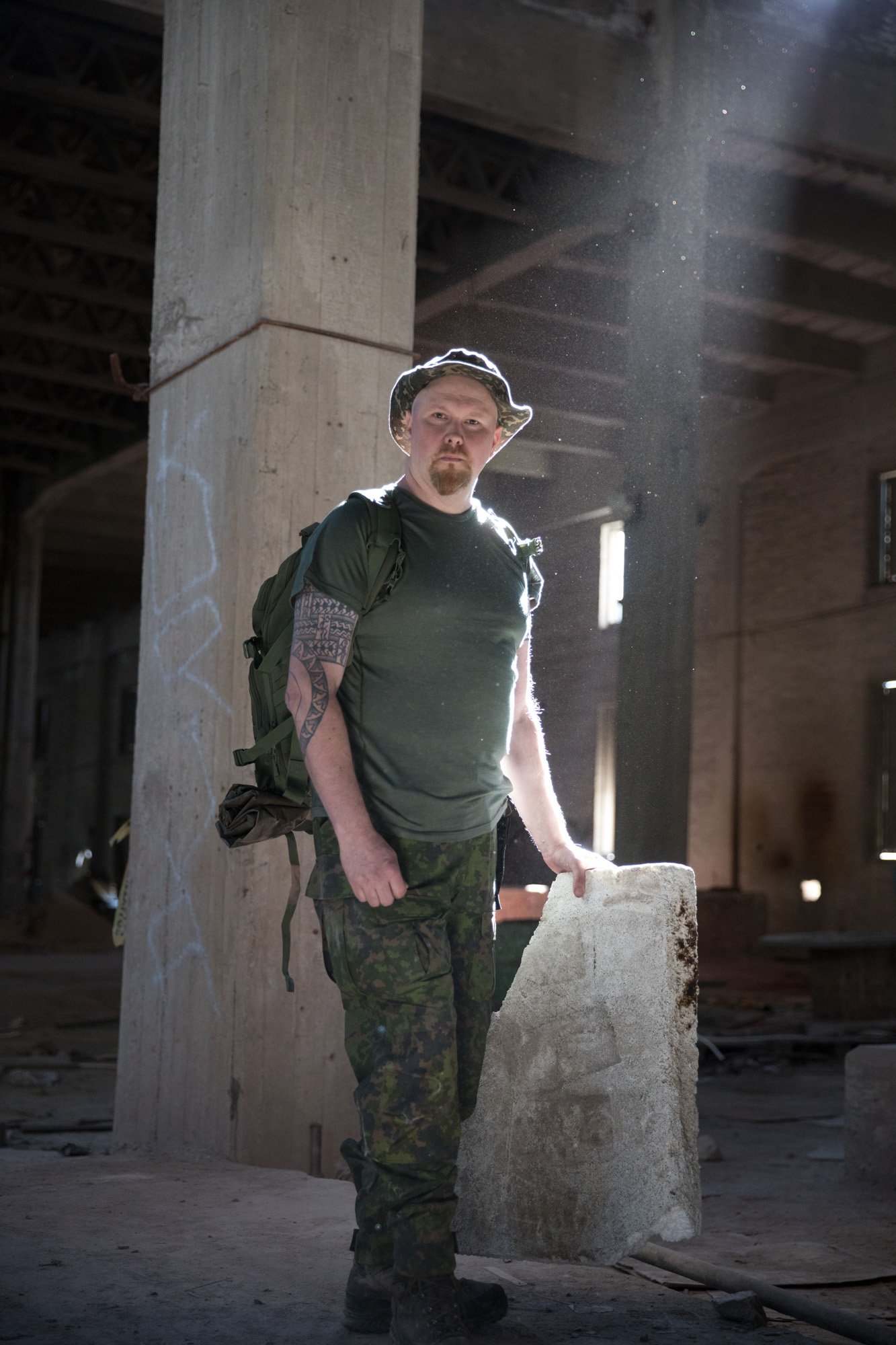
All the gear was easy to carry.
Merino wool is always a lovely base layer material for versatile weather. The whole weekend went with the same set and I even dared to visit a store afterward. Normally, I would always carry two sets, so that I could air them out. The balaclava and mosquito net were a nice addition because of the flying vampires.At first I considered wearing my Salomon Speed Assault sneakers. And they would have been very good in this weather. Their problem is that they aren’t waterproof to any extent, so had the weather turned wet, one pair of socks wouldn't have been that pleasant. Since I didn’t know what to expect, I went with my old tall hiking boots, which were a bit too hot. But when moving among loose rocks and ruins, ankle support is good to have. And their soles are thick and protect a bit better from sharp things.
My survival kit was prepared for a few things that never happened but wasn’t prepared for some things that did happen. For the next time, I should add disinfectant, metal wire, a multi-tool, and the earplugs for those flying wankers.
Team spirit
One of the best things about these courses is how well people stick together. When you’re tired and hungry, everything starts to irritate you. However, there wasn’t that much of it this time and people seemed to enjoy doing things together. Collaboration is vital during a catastrophe and it is very important to train it.
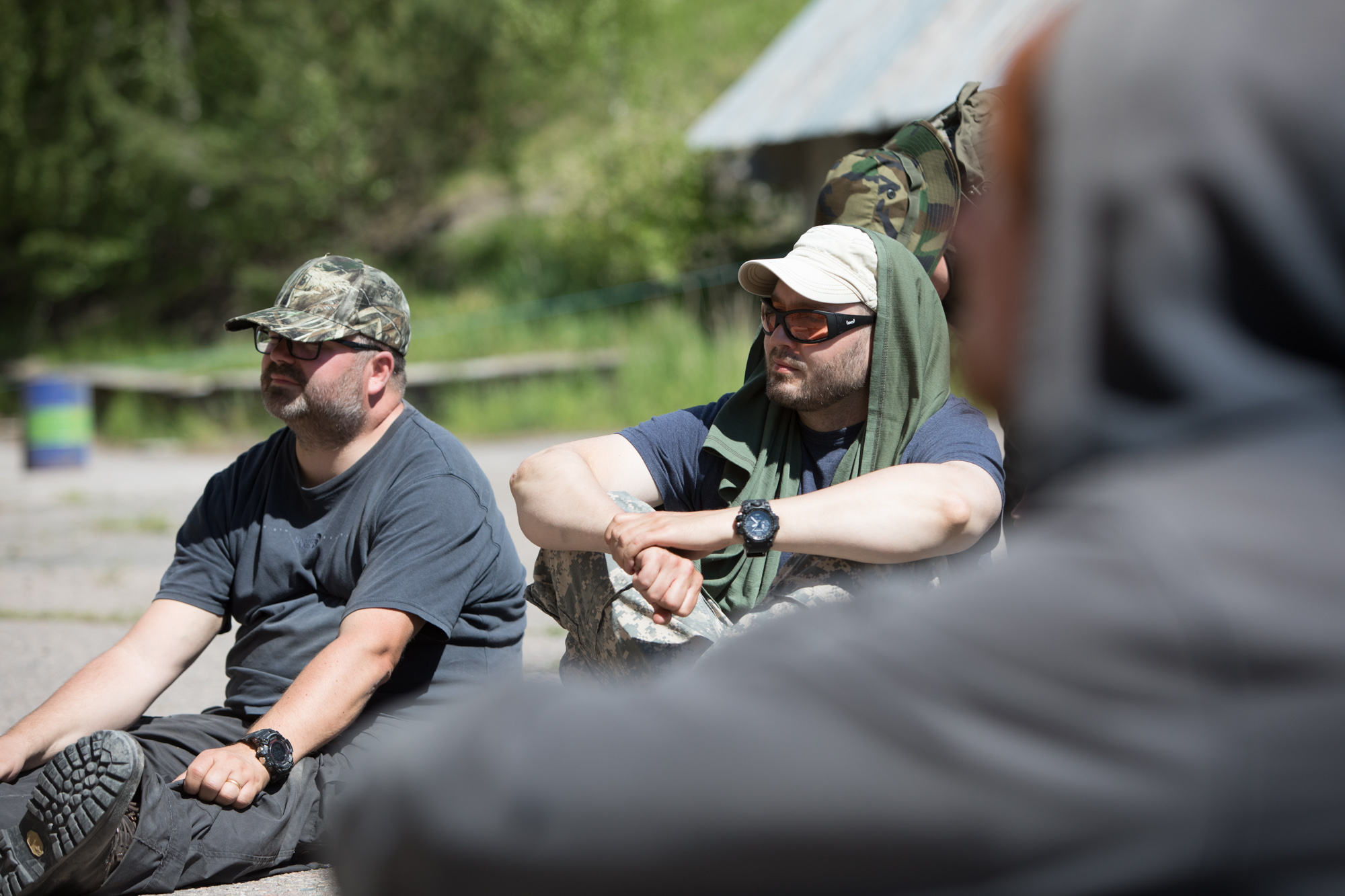
Marko and Juha.
So, who’s this course for?
If you’re into any kind of prepping, this course is for you. Even if you aren’t that seriously expecting the zombie apocalypse, nuclear war, or UFO invasion, these skills are also very useful during smaller catastrophes, such as long power outages or pandemic quarantines. This year has taught us that all sorts of unexpected things can happen and it is good to be prepared. Furthermore, everybody should try sleeping in a garbage bag. It really puts your everyday problems in a completely new perspective.